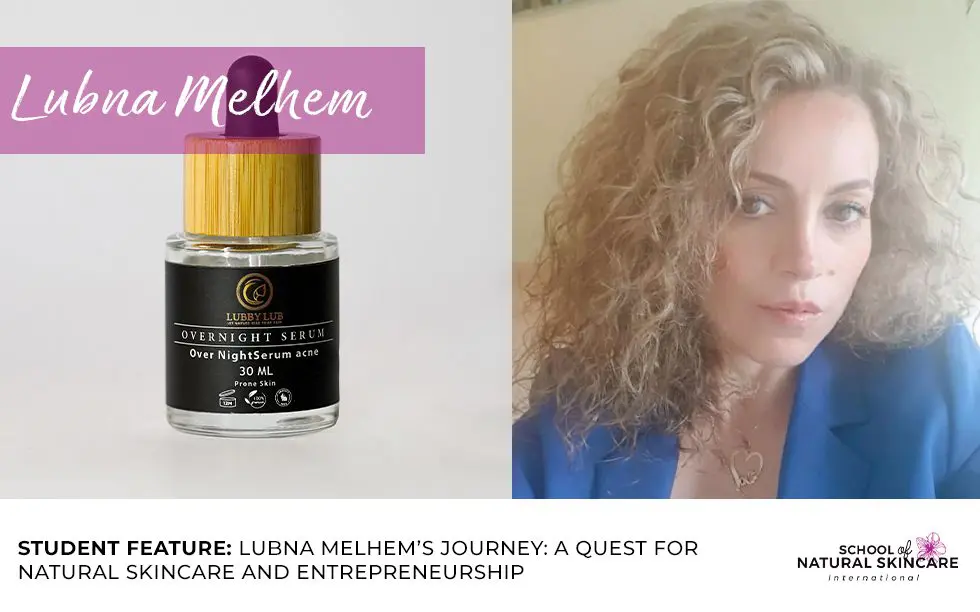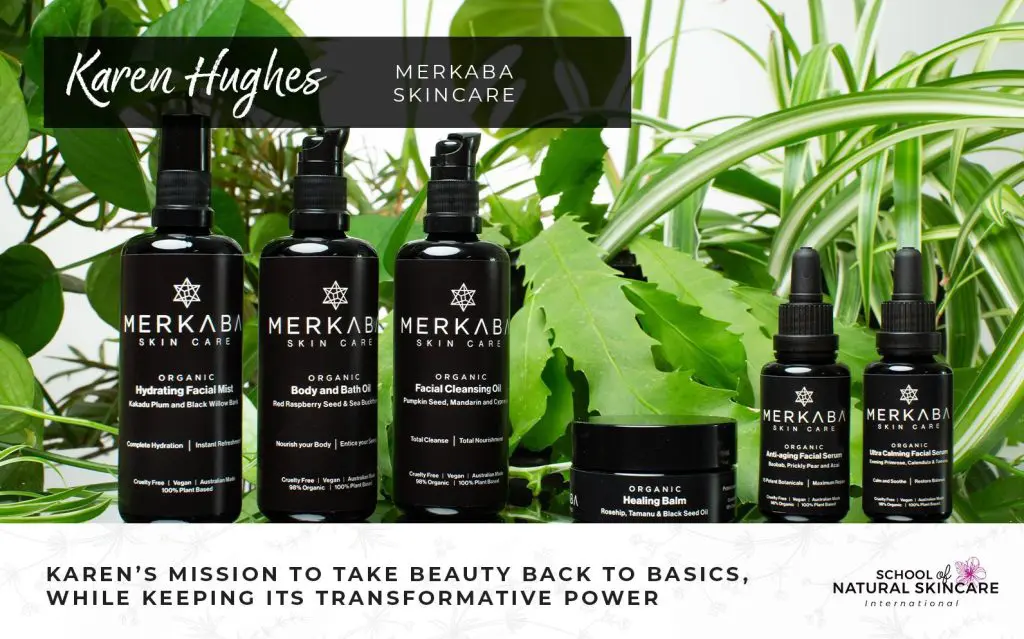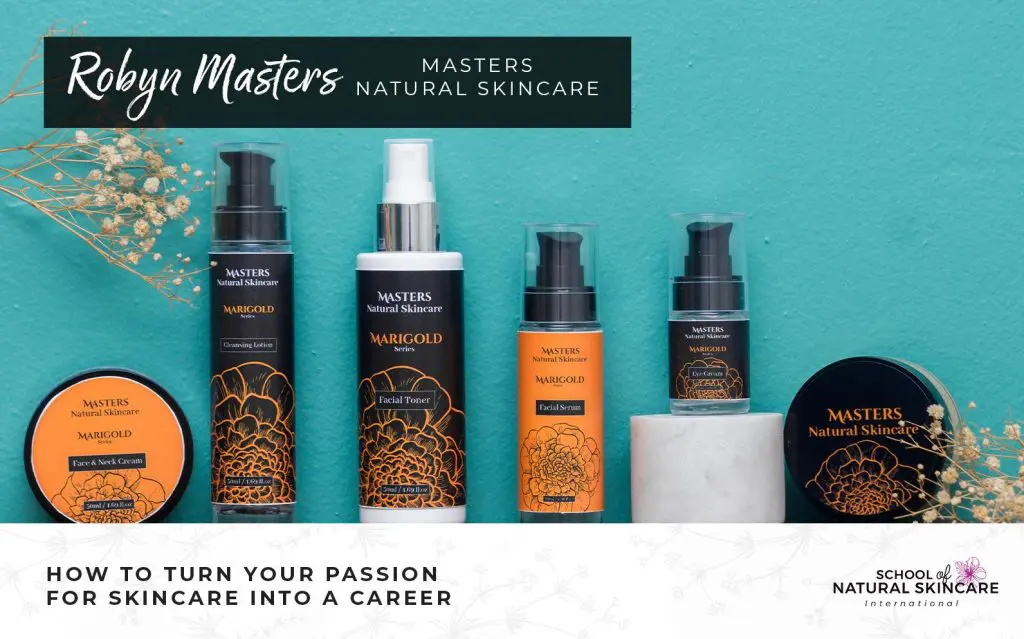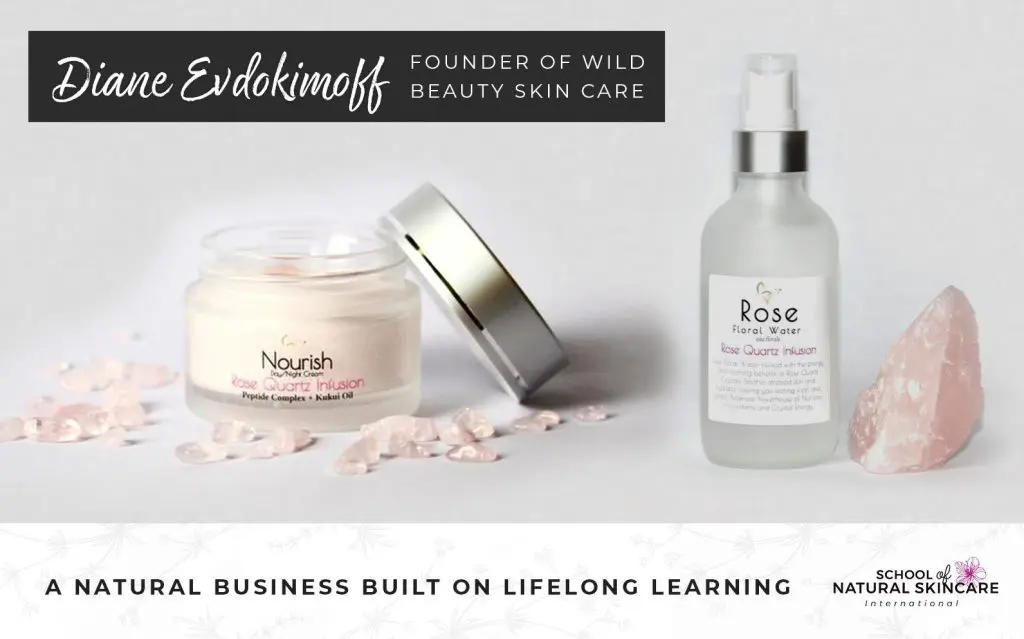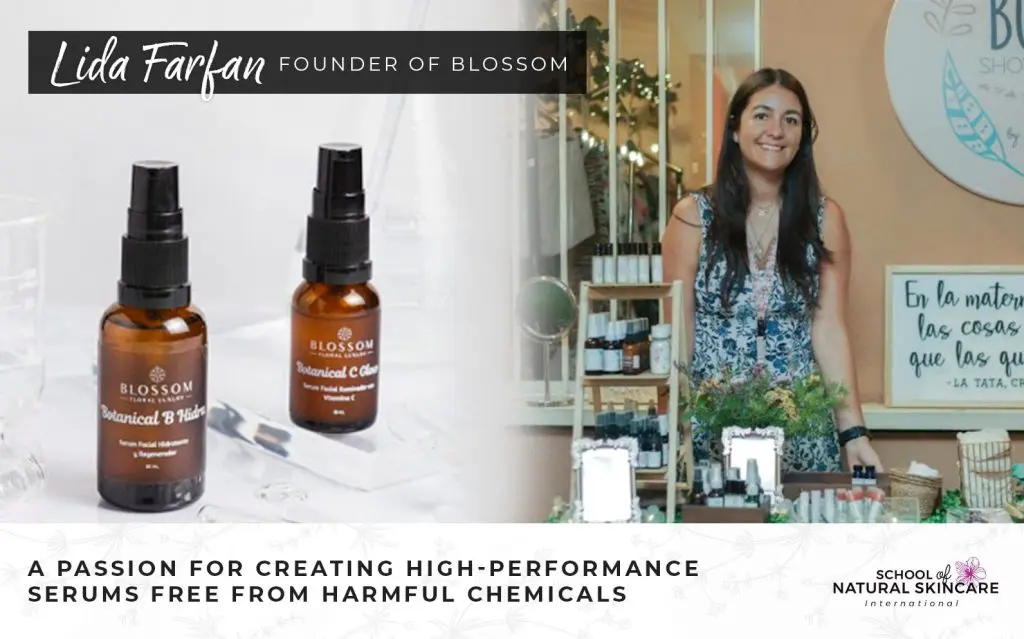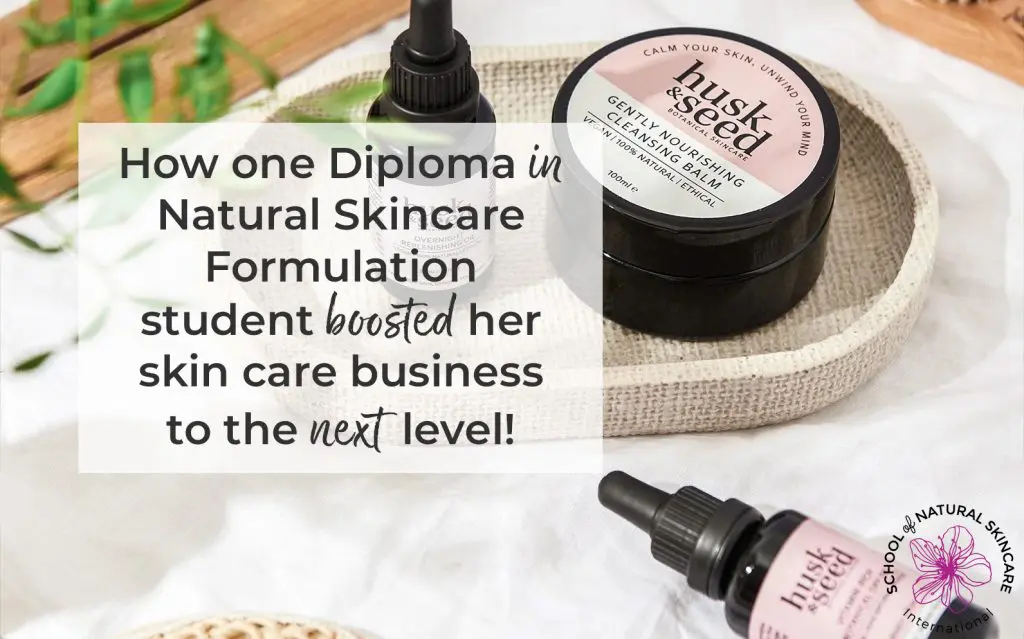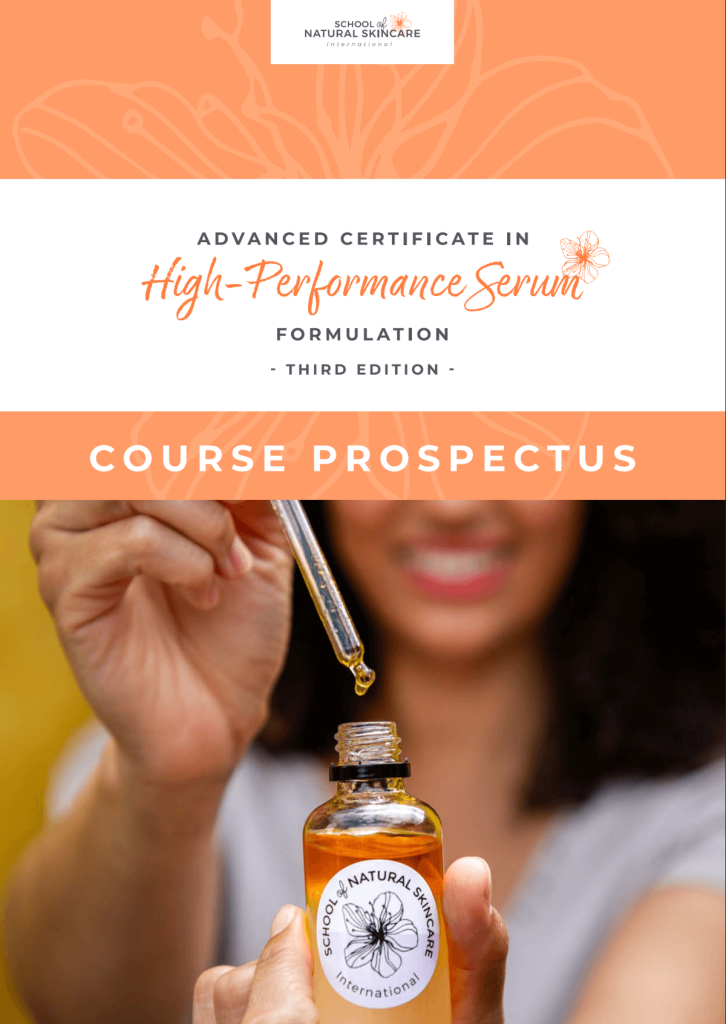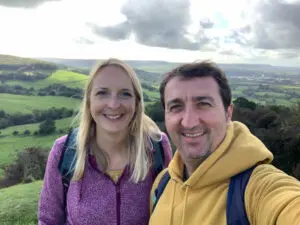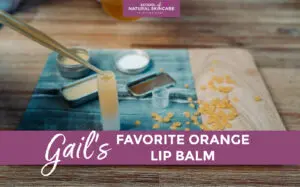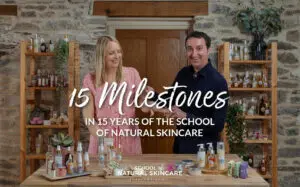Advanced Certificate in High-Performance Serum Formulation
Learn the science of making high-performance serums that deliver visible results with our accredited course.
Formulate advanced serums for the eyes, lips, and face – the perfect way to boost your brand and grow sales.
Would you love to learn to formulate with active ingredients but aren’t sure how exactly to work with them – how much to use, how to make sure they are stable, what pH they need and which are natural?
Are you a skincare formulator ready to take your skills to the next level and expand the range of products you can make, inspired by high-end beauty brands?
Are you a natural or organic beauty brand owner looking to elevate your skincare range and boost your profits?
Introducing the Advanced Certificate in High-Performance Serum Formulation
Our most advanced on-demand online course, helping you upgrade your formulations and add innovative serums to your skincare range.
In this comprehensive program, you'll gain the skills and knowledge to:
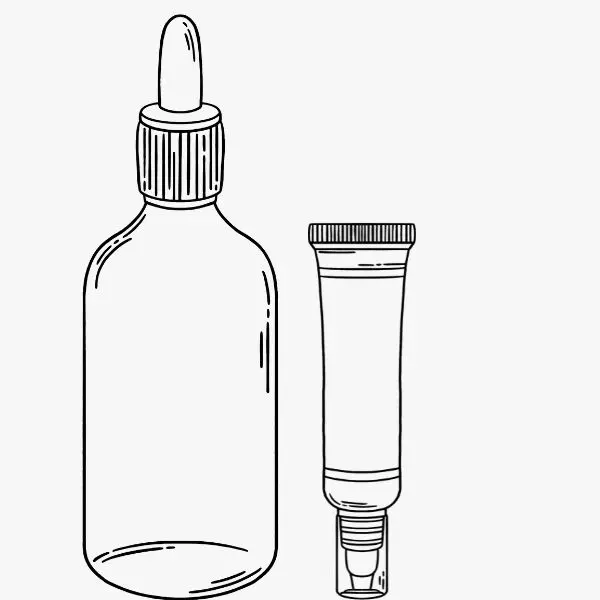
- Work with high-performance active ingredients and expertly apply them to your serum formulations to address specific concerns, such as hyperpigmentation, and deliver visible results.
- Create specialist targeted serums for the face, eyes and lips that meet industry standards, including passing Preservation Efficacy Testing.
- Develop your skills to create a range of high-performance oil-based, gel-based, emulsion-based and bi-phase serums just like those sold by high-end brands (and even better!).
- Add exciting products to your beauty brand to drive sales, boost profit and offer customers the solutions they are looking for.
- Plus, receive expert guidance and support from experienced cosmetic scientists and chemists.
Are you ready to become an advanced skincare formulator?
Join us today!
Find out more
Working with advanced active ingredients requires specialized knowledge of their usage rates, stability, solubility, compatibility and synergy.
This course will teach you how to create advanced formulations with confidence, knowing you’re learning from the experts, including cosmetic scientists and chemists, using tried-and-tested formulations that have passed Preservation Efficacy Testing where required.
Access all the information you need in one place, with plenty of formulation examples and reference materials you’ll use for years to come.
Just imagine how good it would feel if you could:
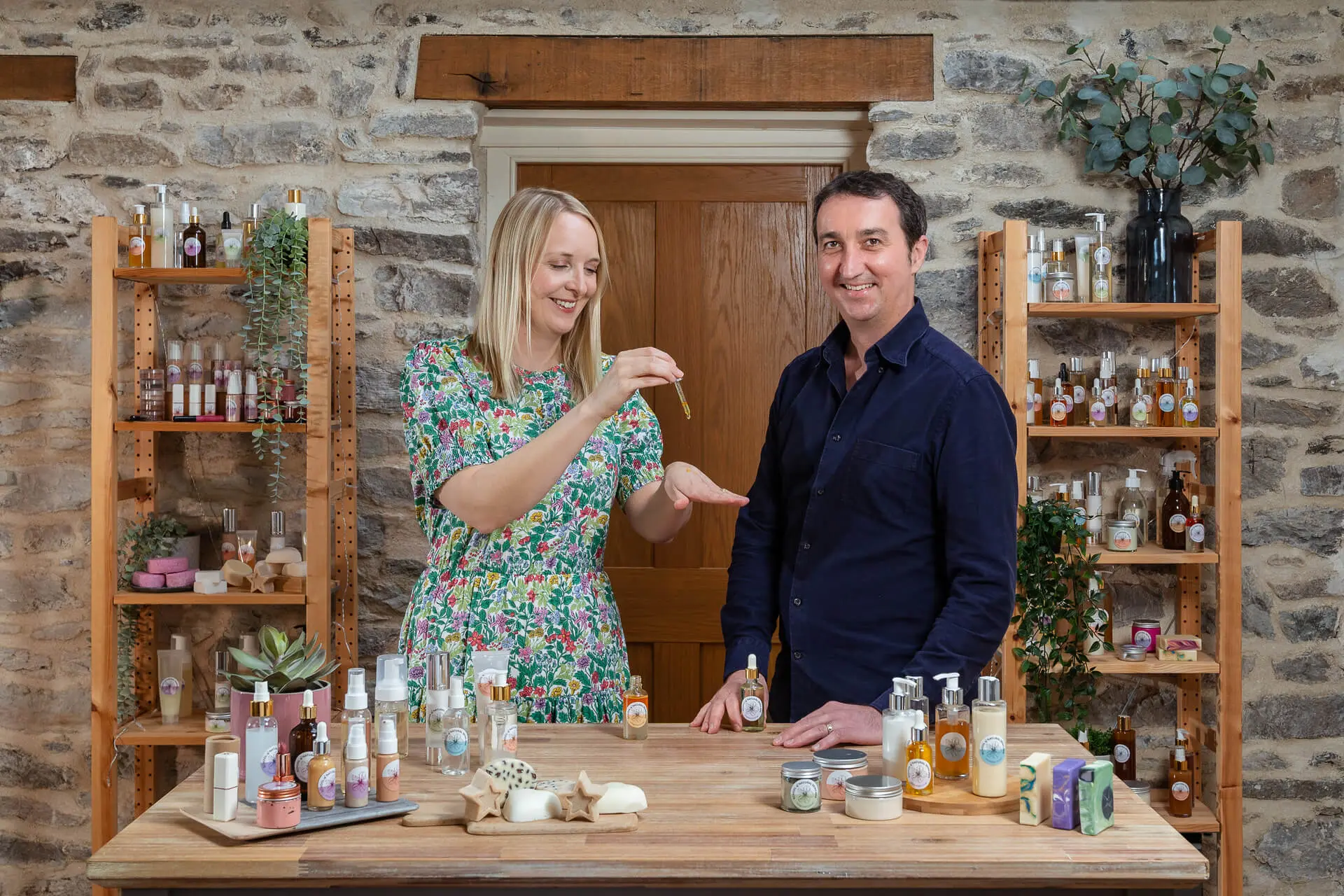
Build on your formulating skills to create in-demand, cutting-edge products
Learn how to incorporate much-talked-about vitamins and active ingredients into your formulations to create serums that deliver incredible results. Plus, you can apply your new knowledge to the other skincare products you make, too.
Complete your beauty routine for radiant-looking skin
Formulate effective, high-performance serums for yourself, family, friends or customers, tailored to your precise needs, and target specific skin concerns, including anti-aging, firming/toning, exfoliating, brightening and pore-reduction.
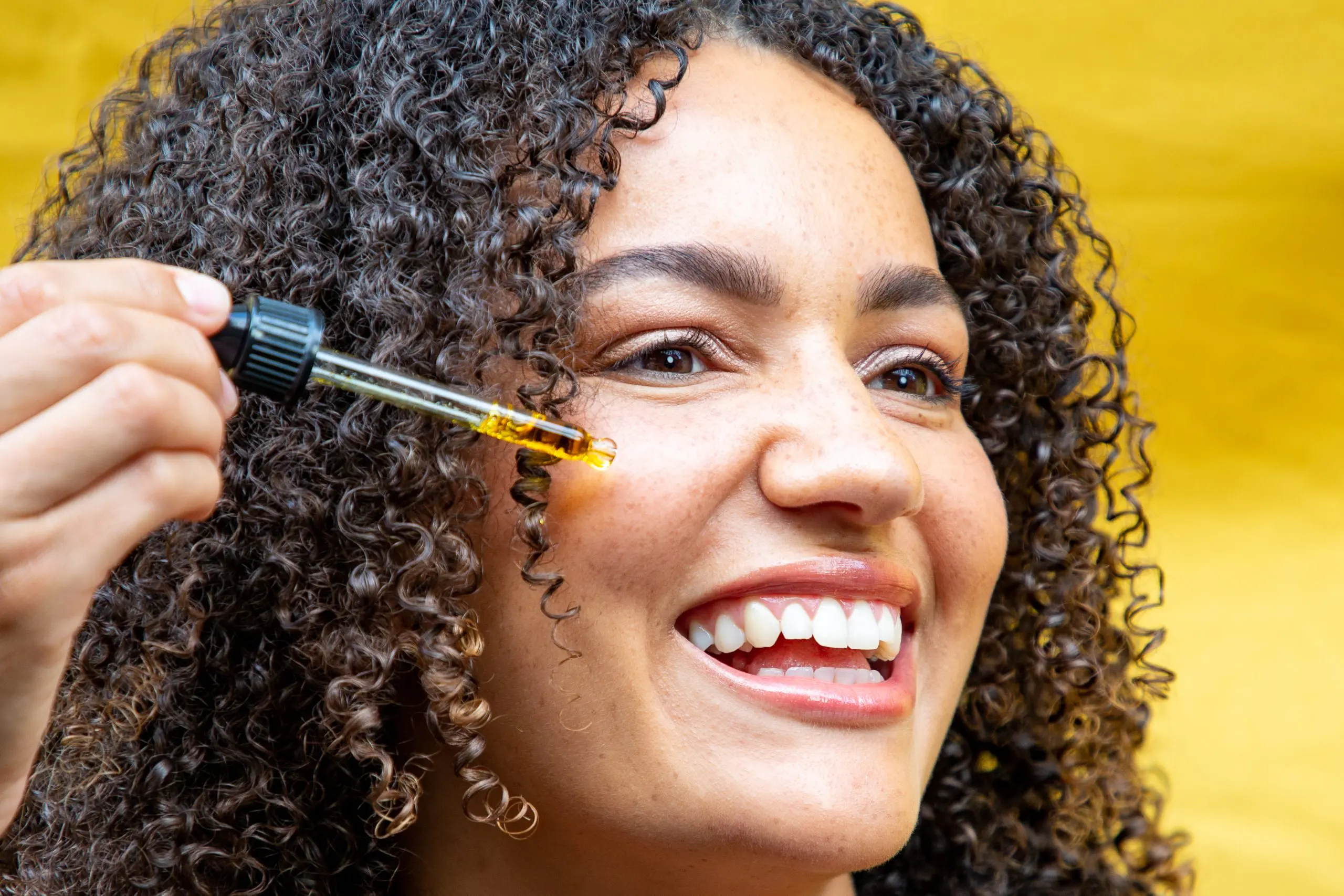
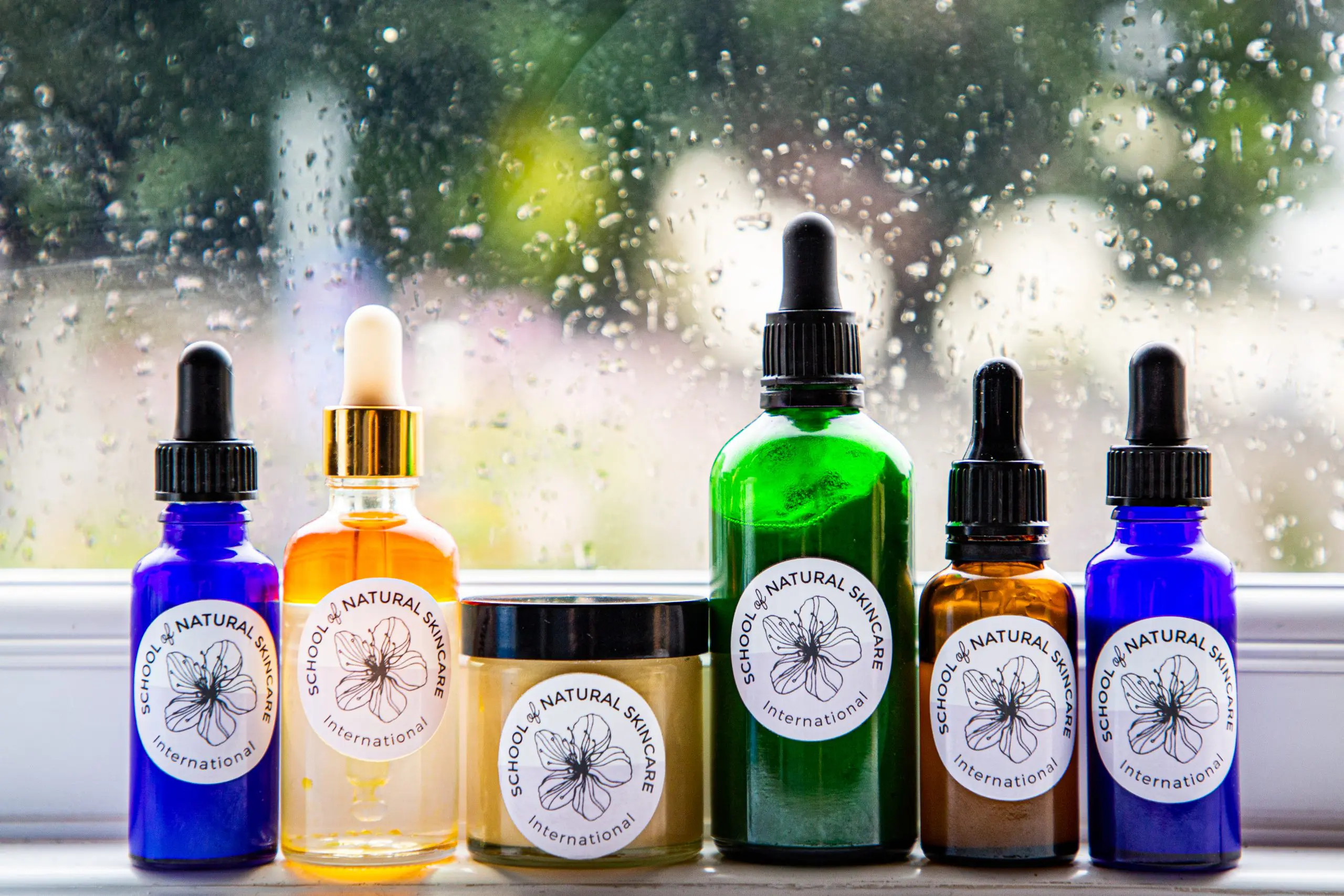
Take your beauty business to new heights
Delight your customers by expanding your natural and organic skincare range to include luxurious, high-end eye, lip and facial serums using only the desired ingredients and no unwanted chemicals.
Learn to formulate a complete serum range with active ingredients:
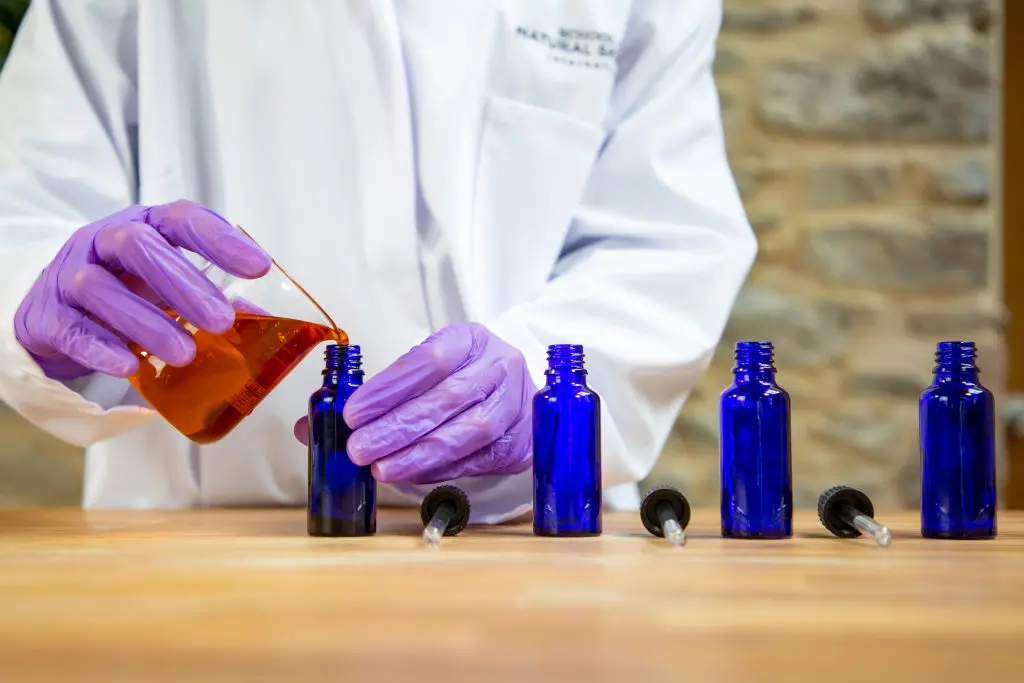
High-performance oil-based and pressed serums
- Antioxidant Concentrate Serum with Vitamin C
- Chamomile Soothing Serum
- Barrier Support Serum with Ceramides
- Repairing Lip Serum with Vitamin C and Coenzyme Q10
- Golden Rose Pressed Serum
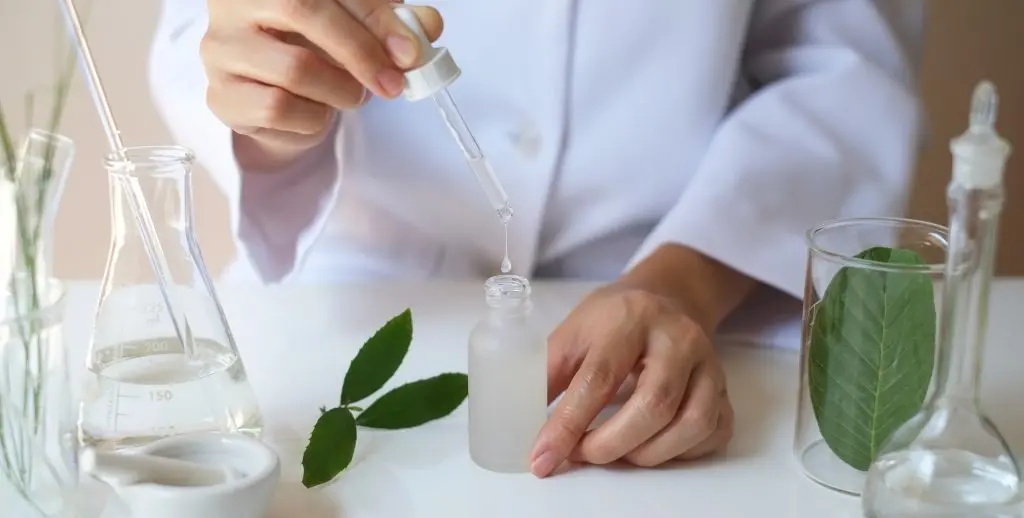
Gel-based serums
- Brightening Serum for Hyperpigmentation
- Moisture Boost Hyaluronic Acid Serum
- Vitamin C and E Gel Serum
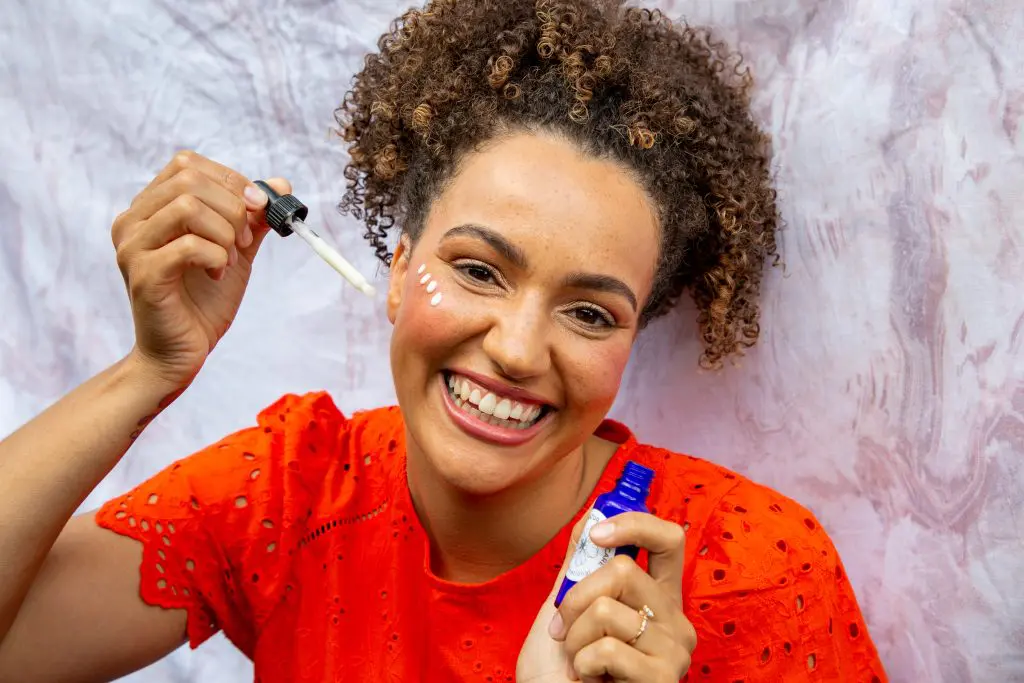
Emulsion-based serums
- Balancing Gel-cream Serum with Niacinamide
- Toning Eye Serum with Caffeine
- Anti-aging Night Serum with Vitamin A
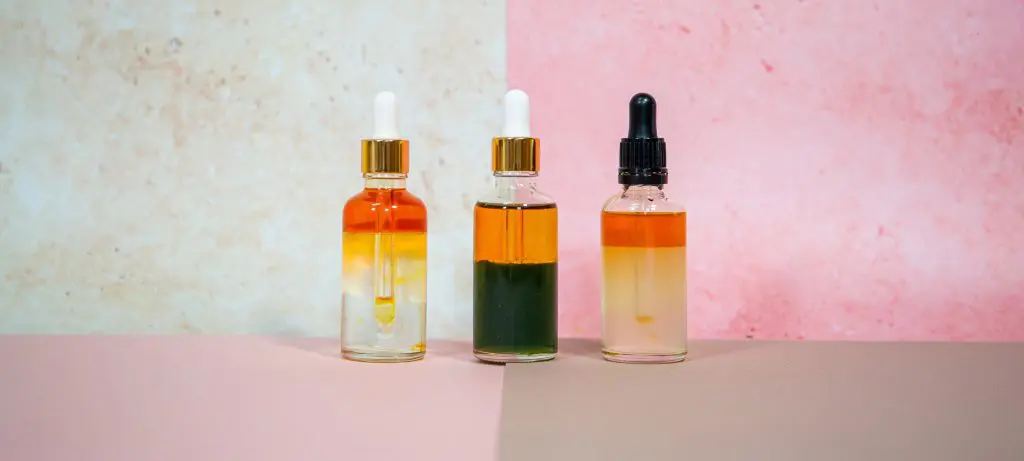
Bi-phase serums
- Anti-redness Bi-phase Serum with Gotu Kola
- Anti-pollution Bi-phase Serum
- Exfoliating AHA Serum
Discover these advanced active ingredients
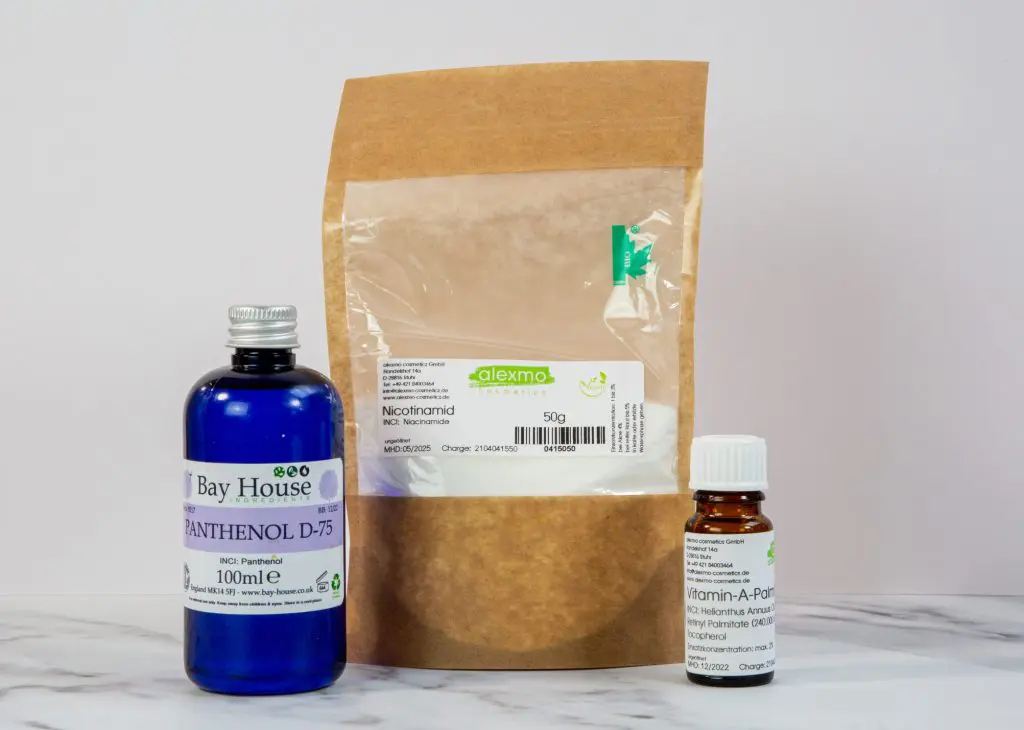
Vitamins and their derivatives
- Vitamin A (including retinol and retinyl palmitate)
- Vitamin B3 (niacinamide)
- Pro-Vitamin B5 (panthenol)
- Vitamin C (including ascorbic acid, sodium ascorbyl phosphate, magnesium ascorbyl phosphate, ascorbyl palmitate and ascorbyl tetraisopalmitate)
- Vitamin E
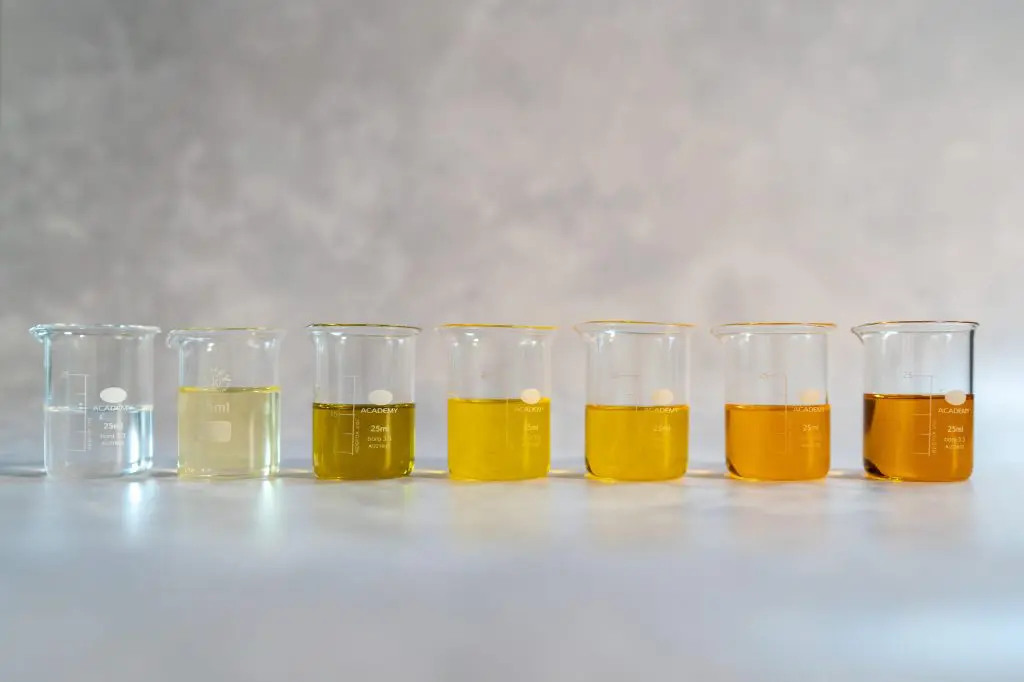
Sophisticated plant oils, natural esters and botanical extracts
- Pracaxi oil
- Cacay oil
- Watermelon seed oil
- Prickly pear oil
- Guava oil
- Perilla oil
- Buriti oil
- Tamanu oil
- Blueberry seed oil
- Natural silicone replacements and more!
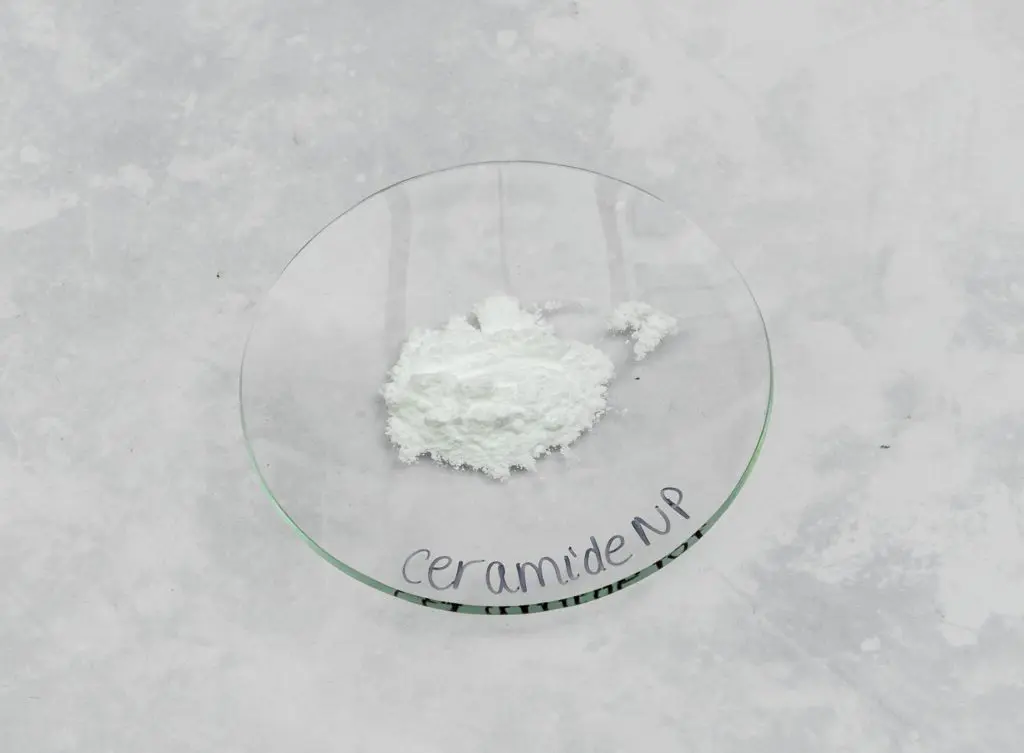
Peptides and ceramides
- Matrixyl 3000
- Matrixyl Synthe’6
- Syn-ake
- Argireline NP
- Ceramide NP
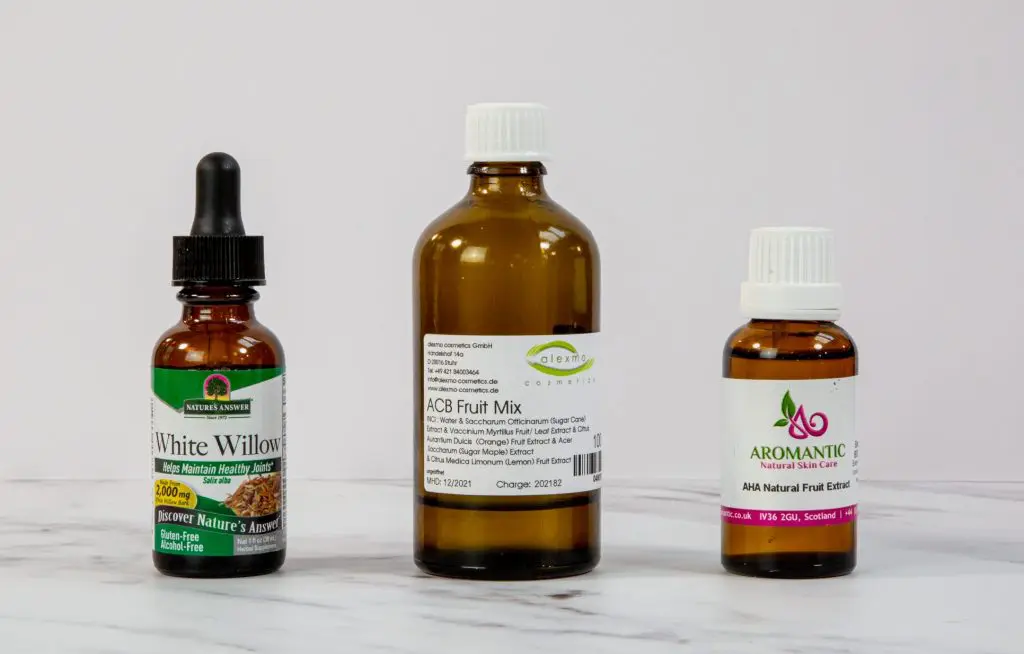
Chemical exfoliants (AHAs and BHAs)
- Lactic acid
- Glycolic acid
- Malic acid
- Citric acid
- Salicylic acid
- Willow bark extract
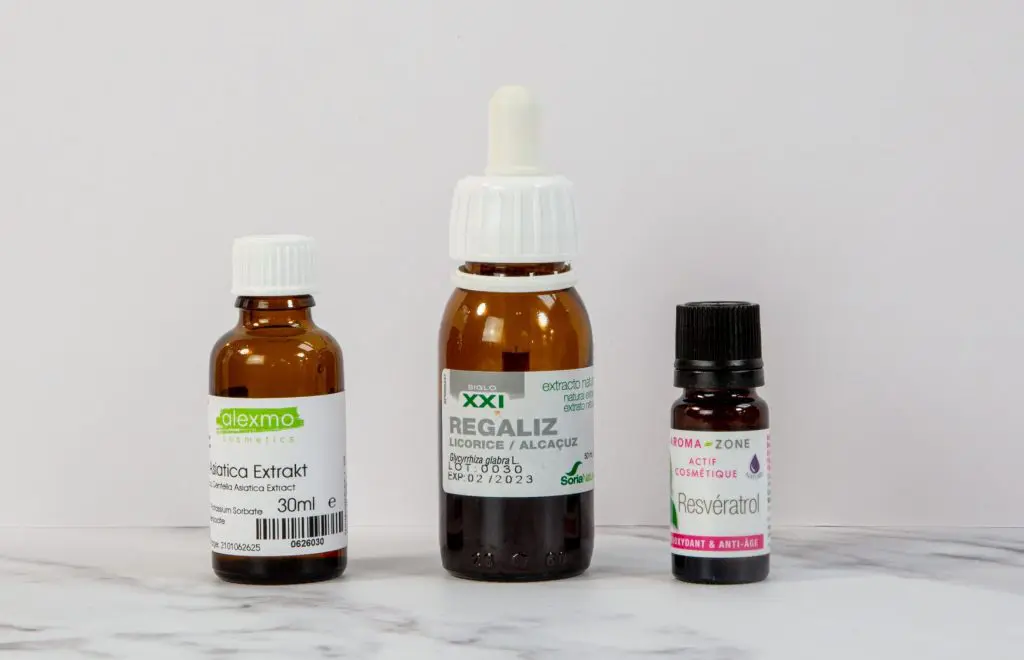
Over 75 additional active ingredients
- Toning
- Anti-inflammatory
- Anti-aging
- Antimicrobial
- Skin brightening
- Skin barrier strengthening
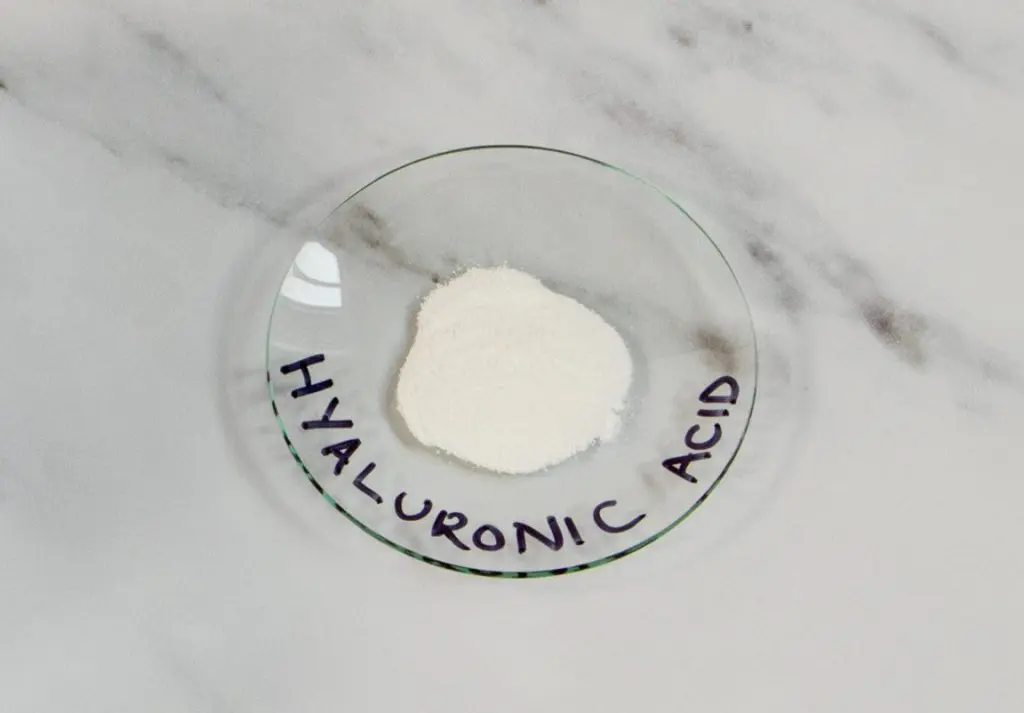
Advanced functional and aesthetic ingredients
- 10+ hydrating humectants including hyaluronic acid
- 10+ antioxidants including co-enzyme Q10
- A wide range of natural emulsifiers, preservatives, gums and solubilizers
Your journey on the Advanced Certificate in High-Performance Serum Formulation
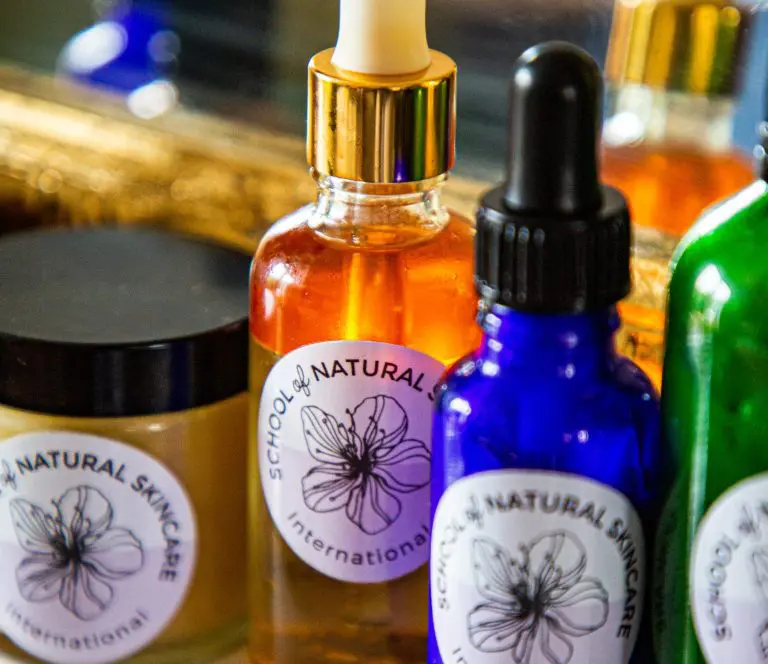
Serum types
Explore a series of high-performance serum types
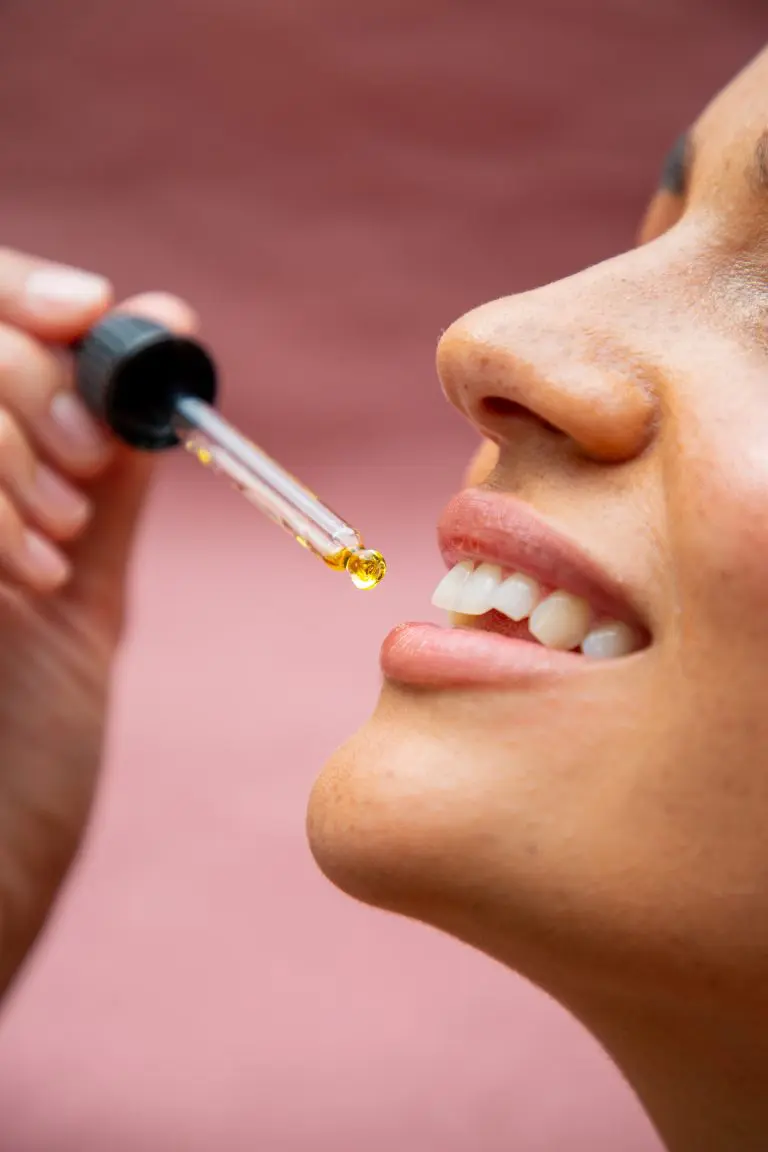
Skin anatomy
Formulate for different areas, skin types and concerns
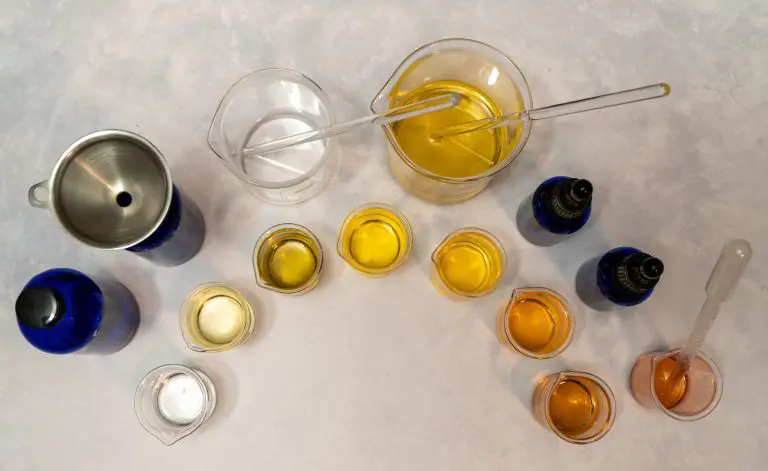
Active ingredients
Discover vitamins, botanicals, peptides, ceramides, AHAs, BHAs and more
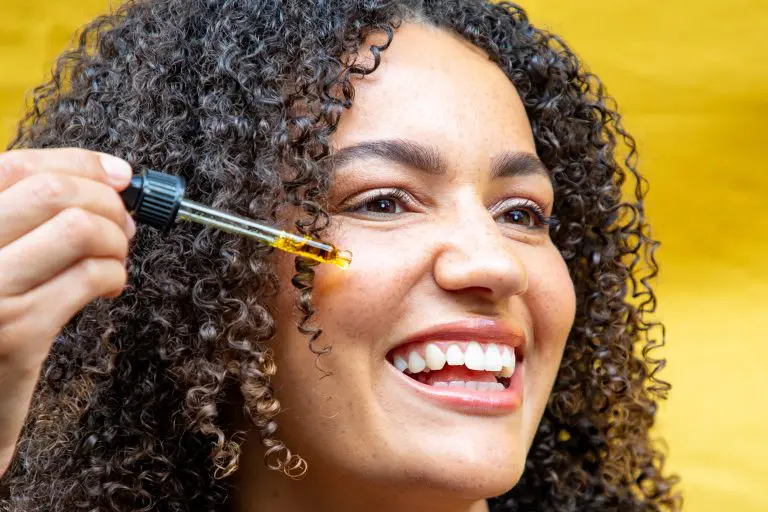
Oil serums
Create advanced oil-based serums for the face and lips

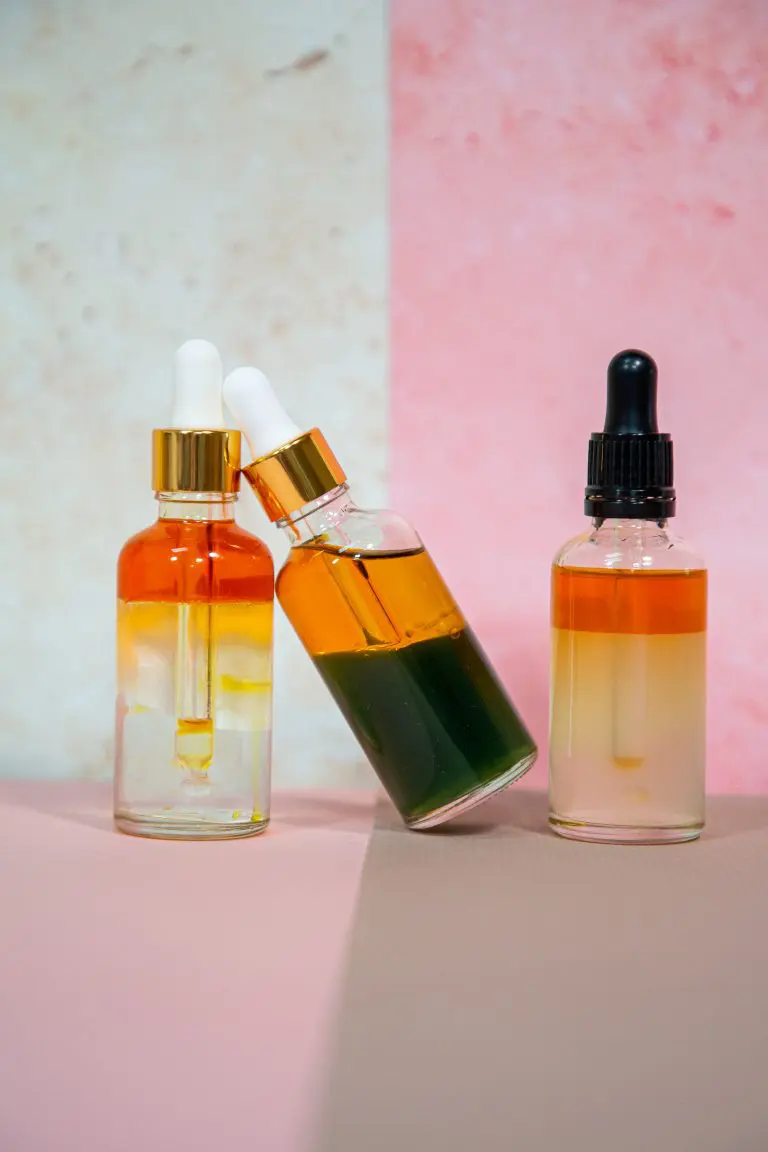
Bi-phase serums
Discover the secrets of bi-phase serums that are shaken to activate
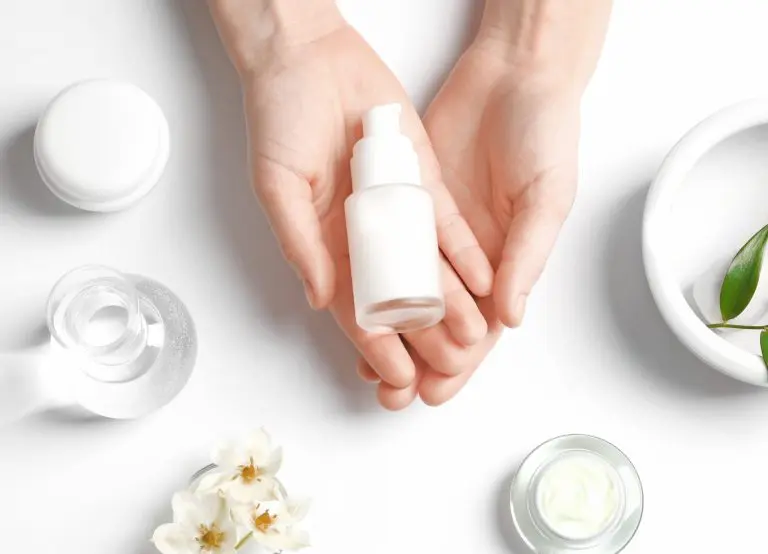
Emulsion serums
Create light gel-creams, thin milky emulsions and rich, creamy serums
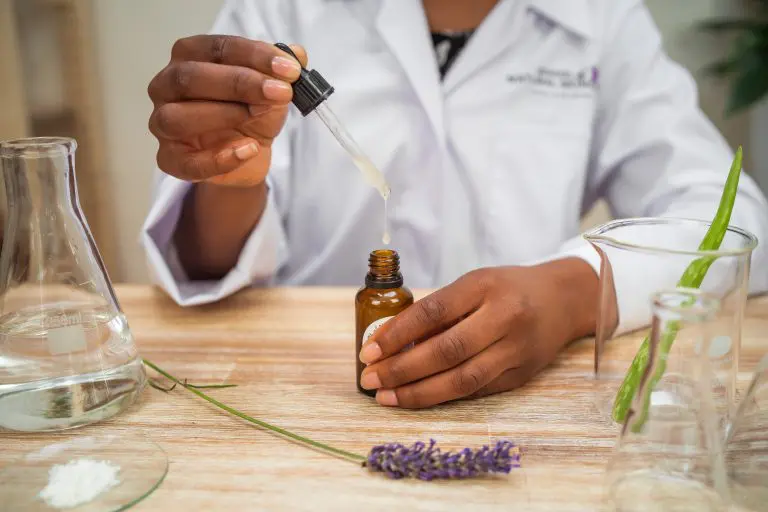
Gel serums
Formulate light-weight gel serums with water soluble ingredients
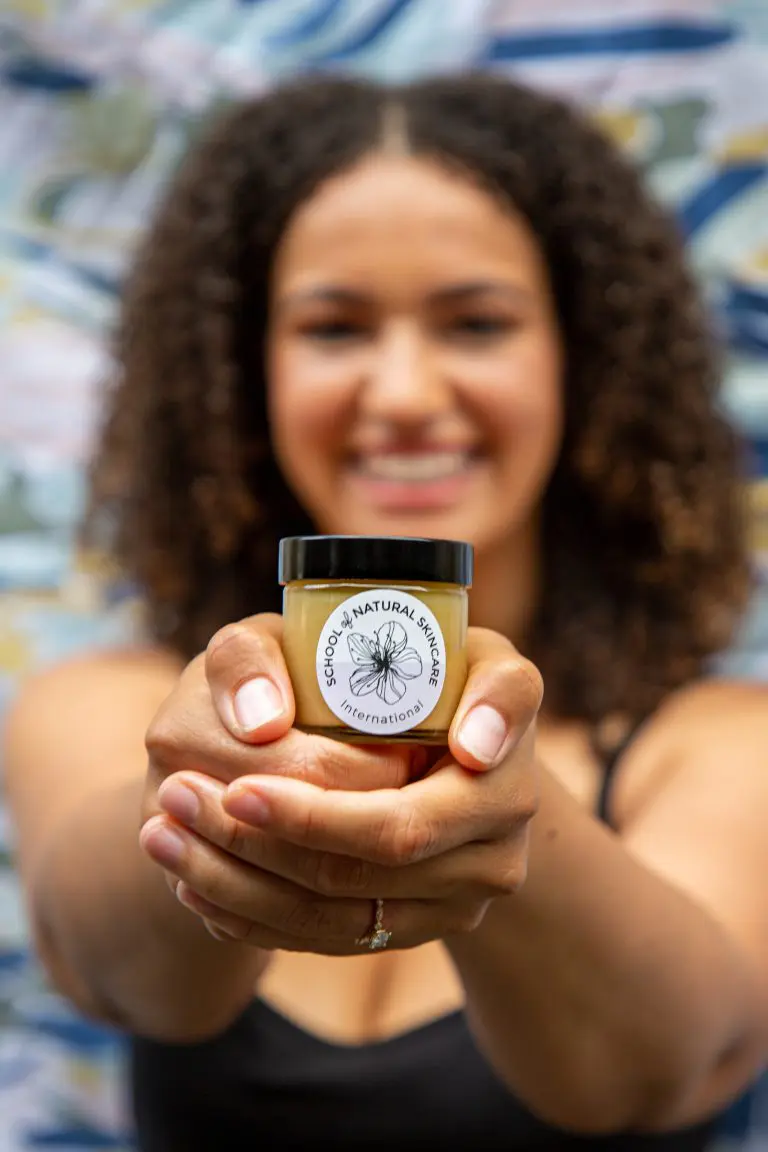
Pressed serums
Make elegant textured semi-solid serums

Serum types
Explore a series of high-performance serum types

Skin anatomy
Formulate for different areas, skin types and concerns

Active ingredients
Discover vitamins, botanicals, peptides, ceramides, AHAs, BHAs and more

Oil serums
Create advanced oil-based serums for the face and lips

Pressed serums
Make elegant textured semi-solid serums

Gel serums
Formulate light-weight gel serums with water soluble ingredients

Emulsion serums
Create light gel-creams, thin milky emulsions and rich, creamy serums

Bi-phase serums
Discover the secrets of bi-phase serums that are shaken to activate
Meet your instructors and tutors
Learn from and be supported by cosmetic scientists and professional formulators.
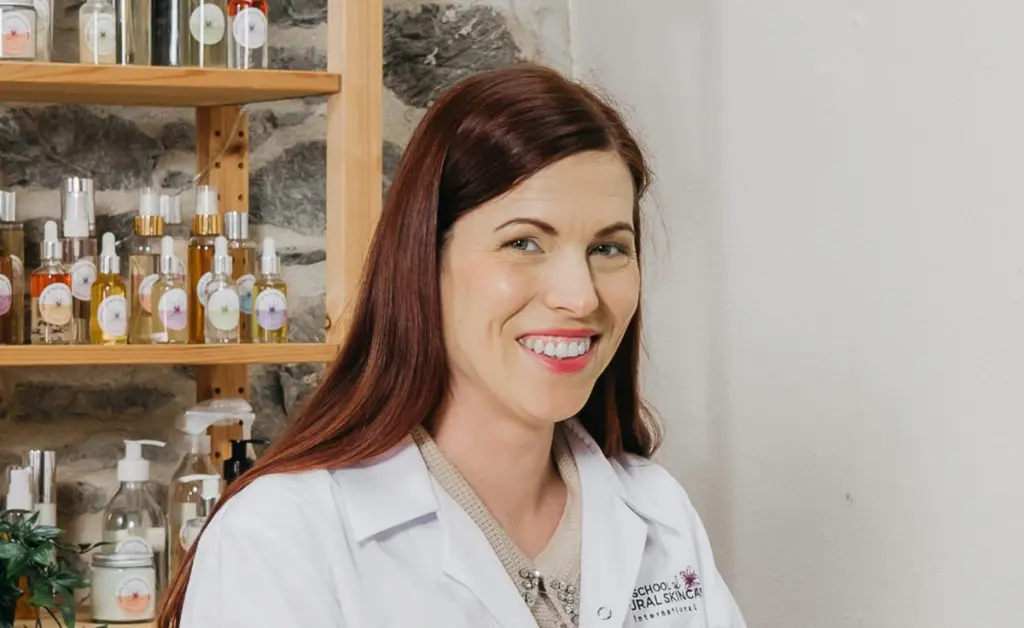
Tina Svetek
Tina is a cosmetic formulator, formulation consultant and safety assessor, who leads new product development for natural skincare and wellness brands.

Dr Nicole Voster
Nicole is a cosmetic formulation consultant and senior lecturer with extensive experience teaching chemistry and cosmetic formulation at South African universities and aiding brands in new product development.

Gail Després
Gail is an award-winning entrepreneur and author of the A-Z of Natural Cosmetic Formulation. After creating her natural skincare brand, Gail moved into education, founding the School of Natural Skincare in 2010.

Gareth Després
Gareth qualified as a certified aromatherapist in 2010 and enriches the content of our online courses with his specialist knowledge of essential oils.
Is the Advanced Certificate in High-Performance Serum Formulation right for me?
This course is perfect for…
Intermediate – Advanced
Experienced formulators ready for a new challenge
Level up your advanced skincare formulation skills and gain specialist knowledge of active ingredients to add to your skillset as you create truly effective serums for you, your friends and your family.
Entrepreneur
Beauty brand owners looking for new ways to delight their customers
Add exciting, high-performance products to your existing skincare range, providing greater choice and helping customers address specific skin concerns.
Student testimonials
The course has been incredibly helpful in refining my formulations.
- Guzel Bayazitova,
- Russia
I was struggling to formulate an eye cream with the right texture, but the course taught me so much about gels, emulsions, and new ingredients. I’m passionate about creating serums and treatments with active ingredients and botanicals, and the suggested formulas provided a perfect starting point for experimenting.
- Guzel Bayazitova,
- Russia
This course has been a game-changer. I’ve benefited greatly from start to finish!
- Colette DelFrate,
- Canada
I started making natural products for family and friends, but I wanted to take my skills to a professional level. Enrolling in the School gave me a thorough understanding of preservatives and essential oils. Now, I can confidently create my own formulas. The templates, sample formulas, and videos were invaluable resources.
- Colette DelFrate,
- Canada
The course was the best way to advance my formulation skills and grow my brand.
- Karina McDonald,
- Australia
I struggled to find time for research and found your course, which condensed relevant information for quick access. I wanted to create high-performance anhydrous serums to launch my brand online quickly. The course provided targeted information and useful templates for various formulations. I appreciated the real-life formula examples and the course’s practical approach.
- Karina McDonald,
- Australia
My glowing skin is a testament to the success of these formulations.
- Helaine Coetzee,
- South Africa
When I started out I felt clueless about my own skincare but this detailed scientific course enabled me to formulate and create my own natural, targeted, and effective anti-aging skincare products. I loved the creative process of linking skincare problems with targeted solutions using available ingredients in South Africa. I absolutely love your school!
- Helaine Coetzee,
- South Africa
The advanced serum course exceeded my expectations and perfectly suited my needs.
- Oluwaseun Balogun,
- Nigeria
I struggled with understanding melanogenesis and formulating products for hyperpigmentation and spots with natural ingredients. This course provided a deeper understanding of melanin production, inhibition, and ingredient selection. It enhanced my ability to create effective skincare products and share this knowledge with others.
- Oluwaseun Balogun,
- Nigeria
Why learn to formulate with advanced active ingredients?
Make serums that offer a wide range of skin benefits including reducing the appearance of hyperpigmentation, anti-aging, antioxidant, soothing, calming, protective, hydrating, firming/toning, brightening, repairing, oil-balancing, pore-reduction, anti-pollution and more.
Avoid issues of product instability or ingredient incompatibility when you learn from experienced chemists rather than relying on questionable information sourced online.

Invest in your skills and knowledge to become a more valuable formulator who is a cut above the rest.
Sell efficacious products with higher profit margins. Serums are high-end skincare products that customers are prepared to pay a premium for.
Want to try before you buy?
Sample a selection of our course material inside our online classroom.
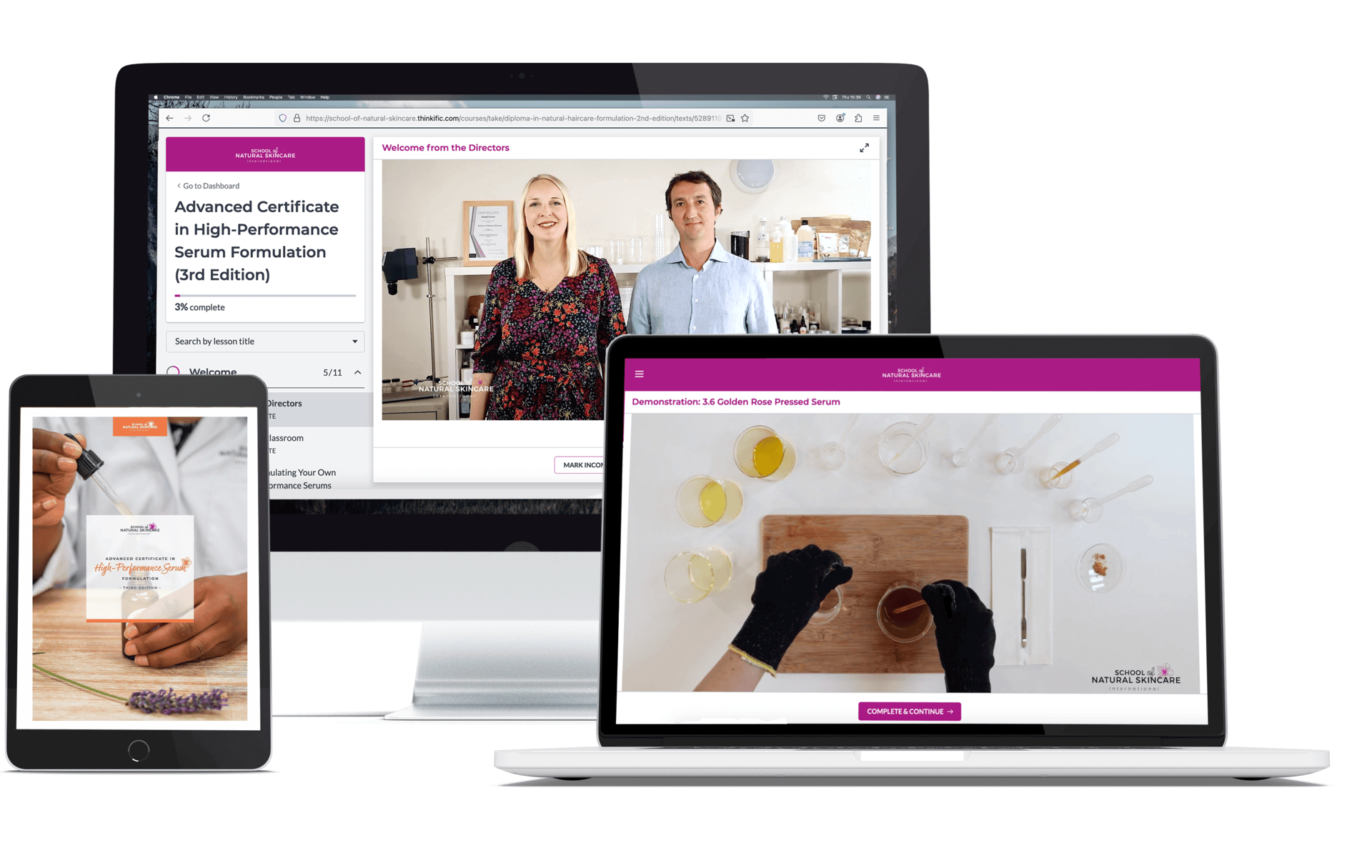
How does the Advanced Certificate in High-Performance Serum Formulation work?
All our training is completed through our easy-to-use online classroom. You can enroll anytime and study from anywhere in the world at your own pace.

Knowledge
You don’t need a scientific background; our courses cover everything you need to know.
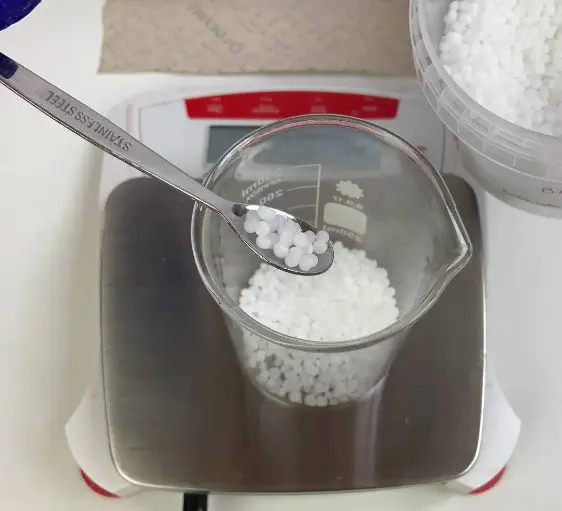
Skills
We start with more straightforward products and progress to the more complex or challenging ones so you can build your skills and confidence.
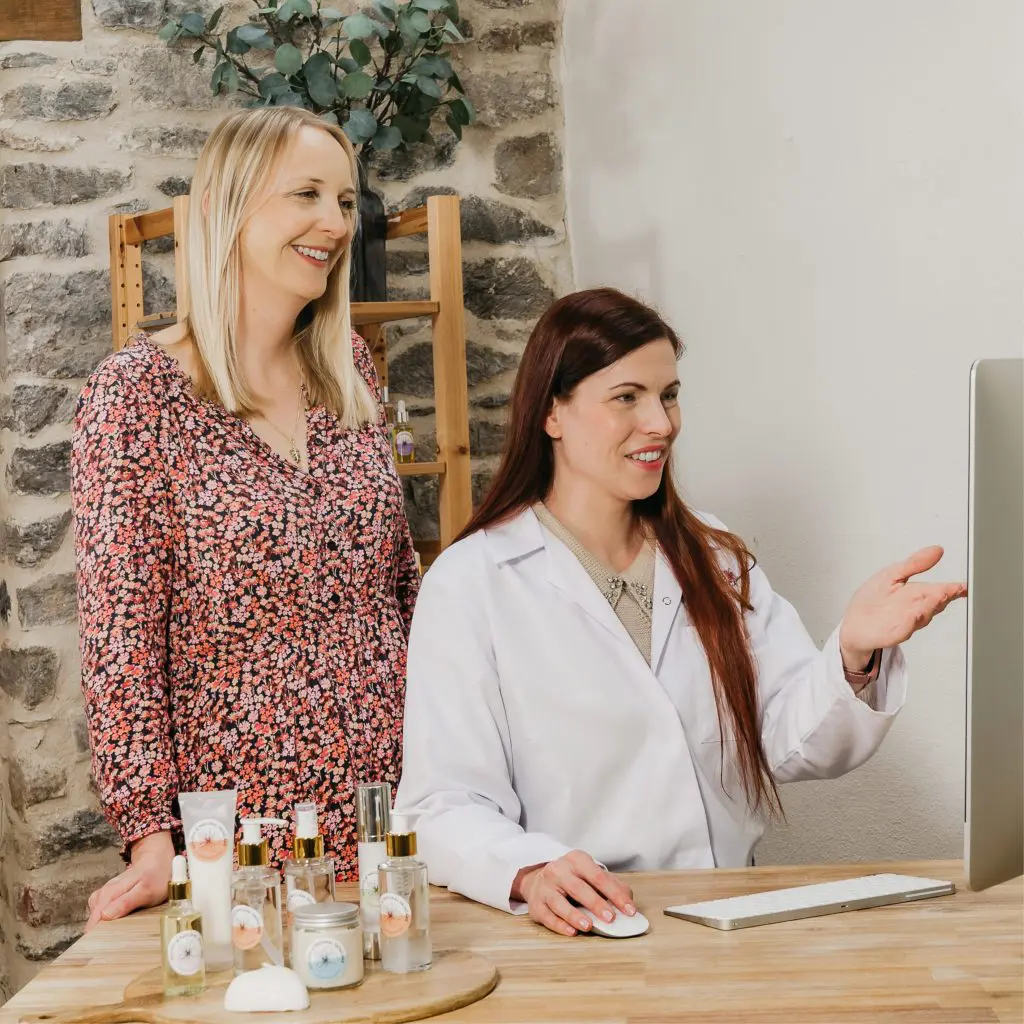
Support
You can rest assured that you are learning from qualified and experienced professionals and are not misled by inaccurate, poor-quality and unsafe information often found online.
We’ll teach you to formulate by providing the following resources for each type of product:
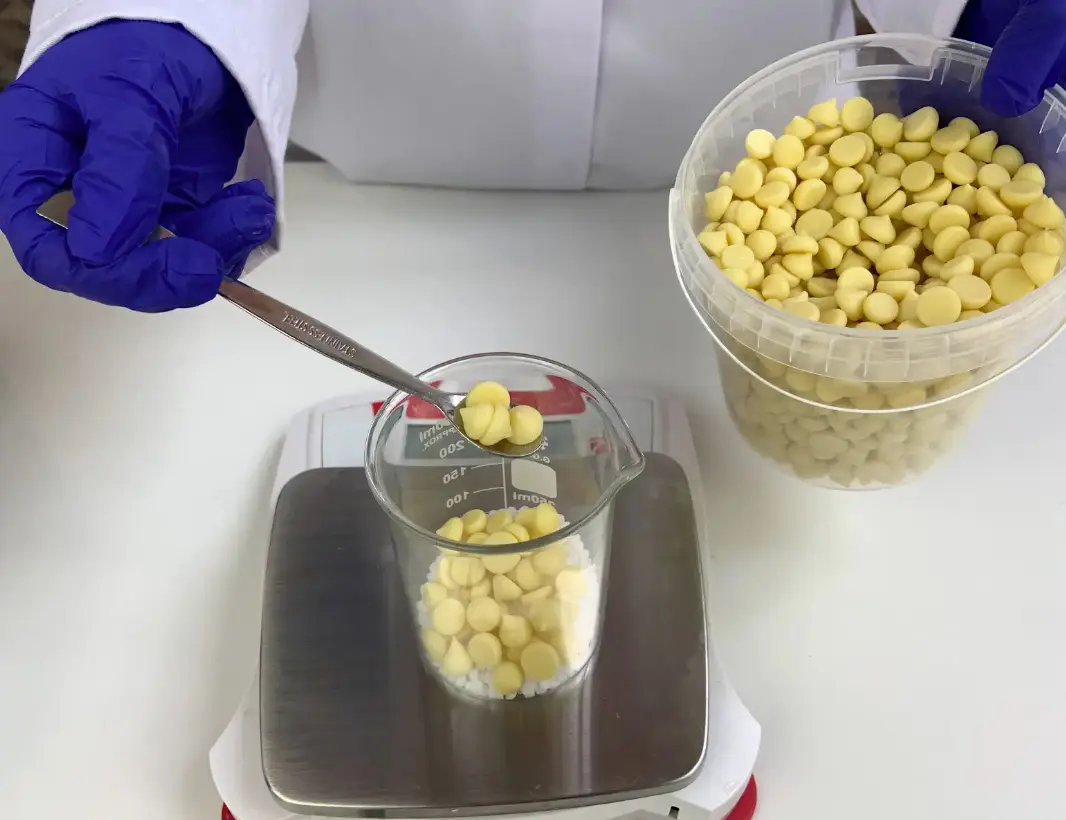
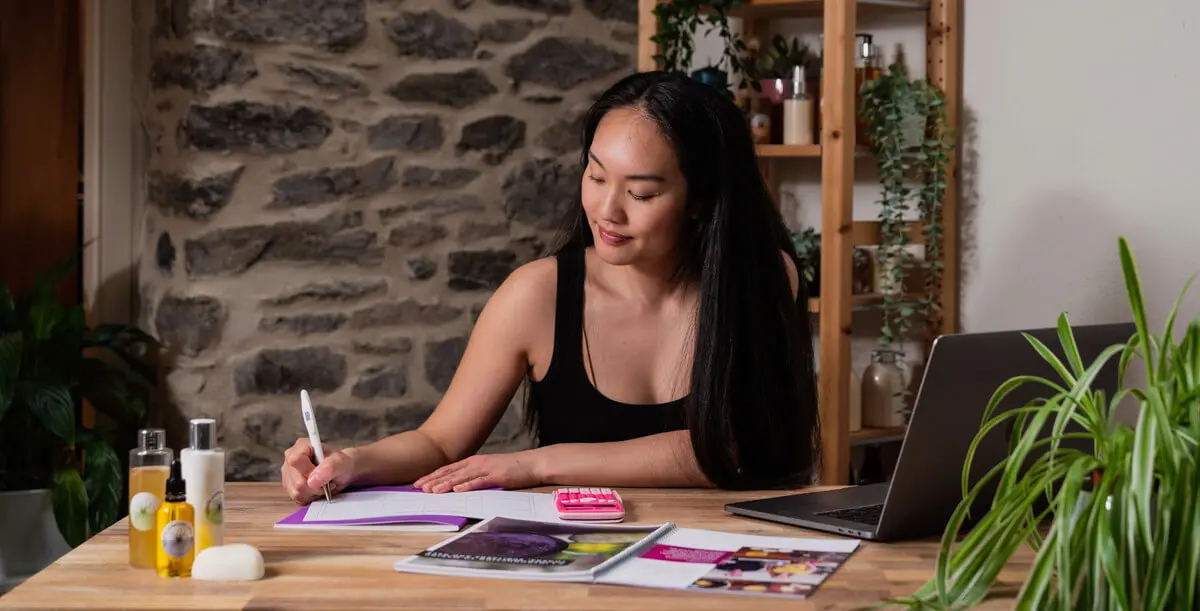

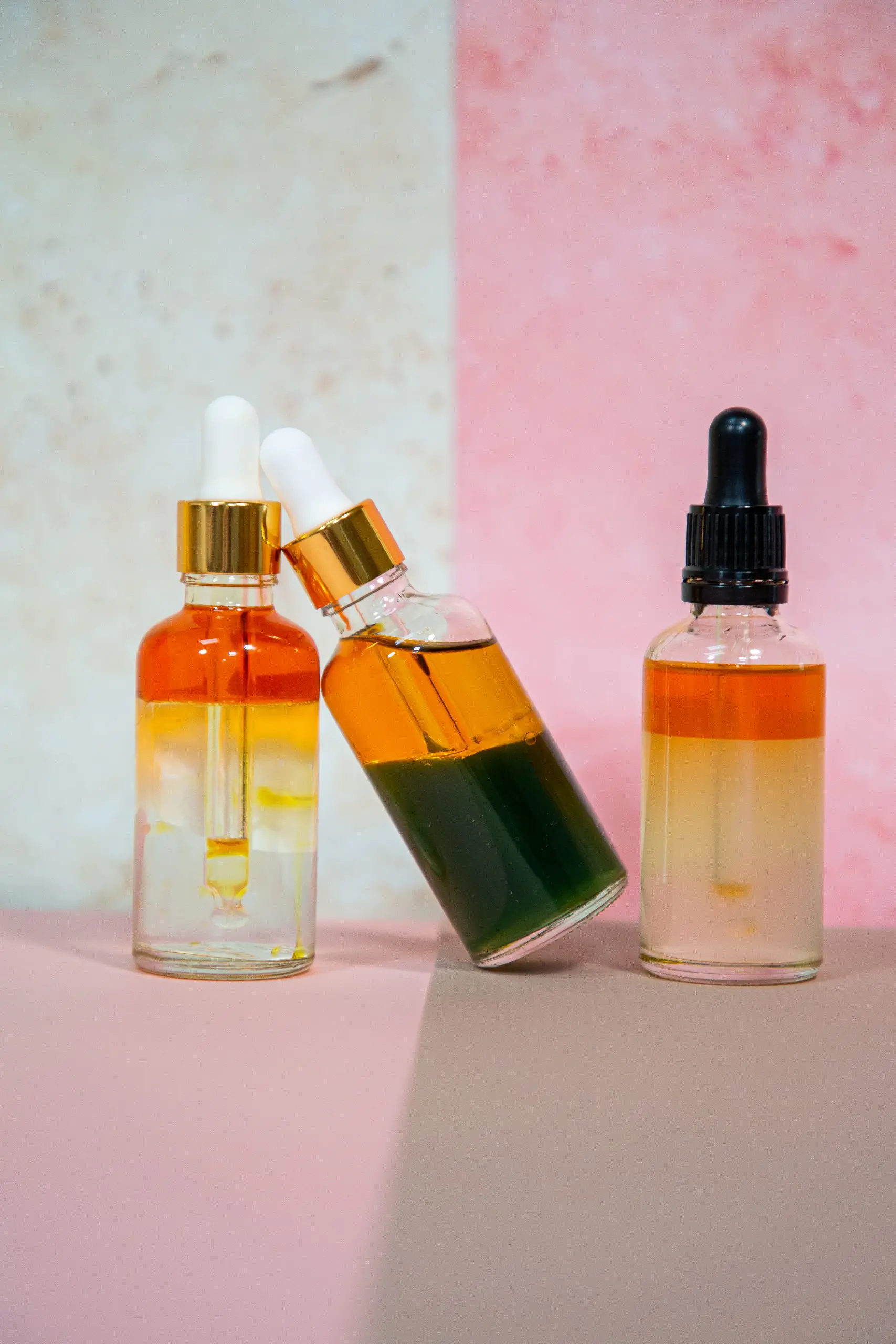
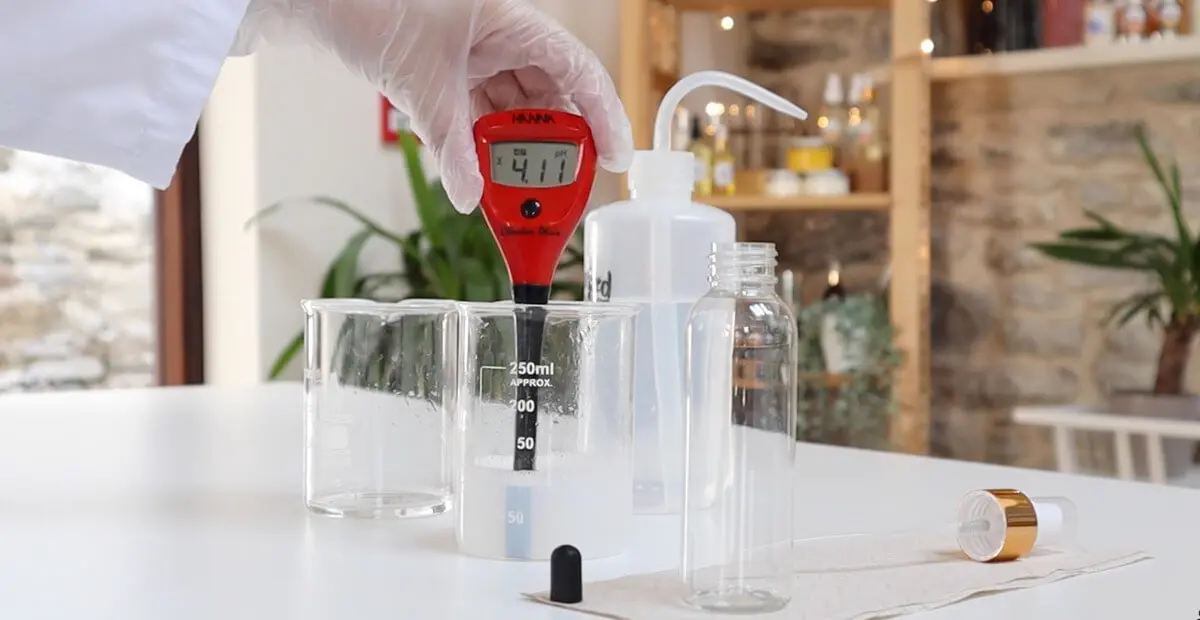
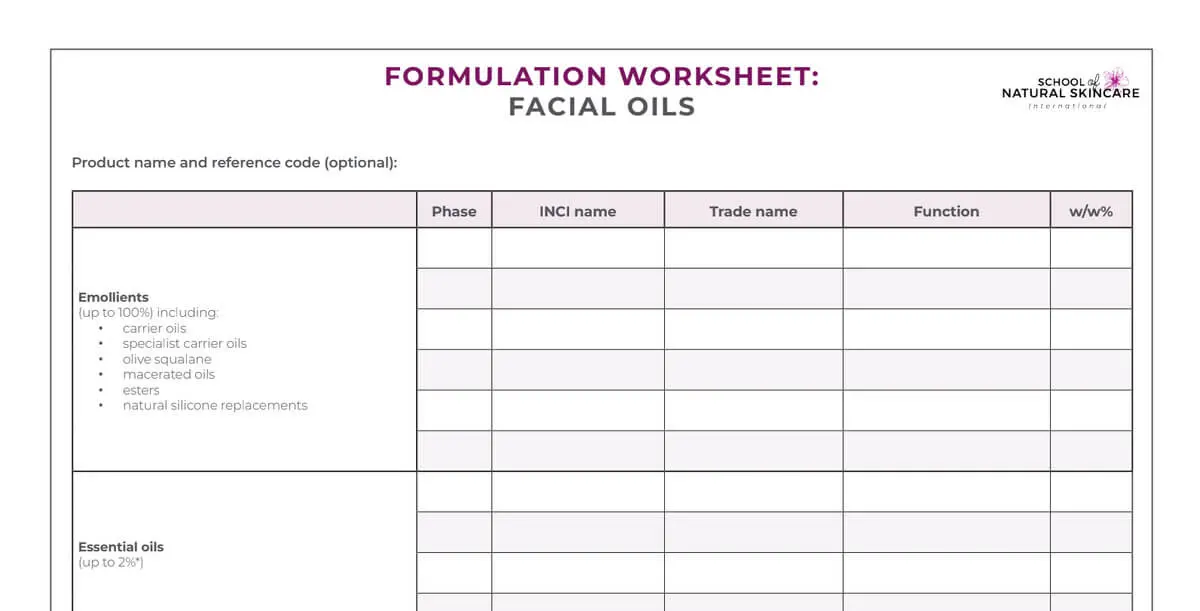
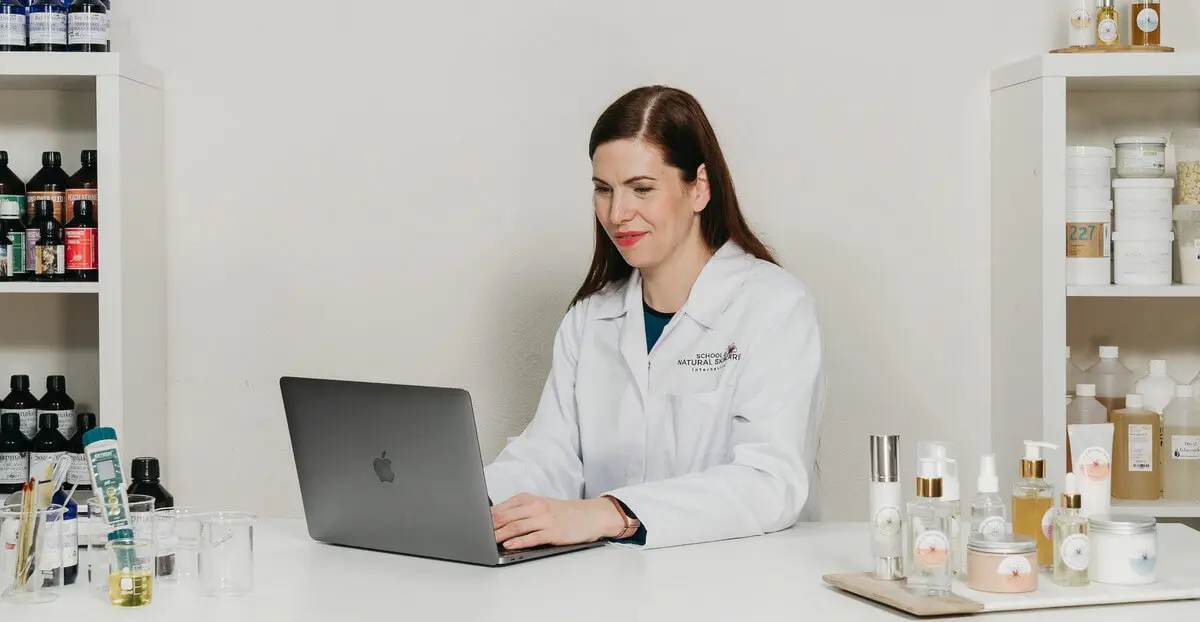
More than just a course, our Advanced Certificate in High-Performance Serum Formulation includes the support and community you need to truly thrive in your formulating journey
You’ll receive:
7 in-depth modules accompanied by seven detailed textbooks with step-by-step instructions and beautiful photographs.
Full HD video classes including step-by-step product making demonstrations.
Advanced formulation examples to practice with and preservative efficacy test reports.
Join our supportive, vibrant community of like-minded students and graduates across the world.
Easy-to-use online classroom, quizzes, and activities.
Six downloadable, fillable workbooks.
Assignments marked personally by our cosmetic scientists and a certificate on successful completion.
An in-depth library of ingredient information featuring 200+ ingredients
Be supported by cosmetic scientists
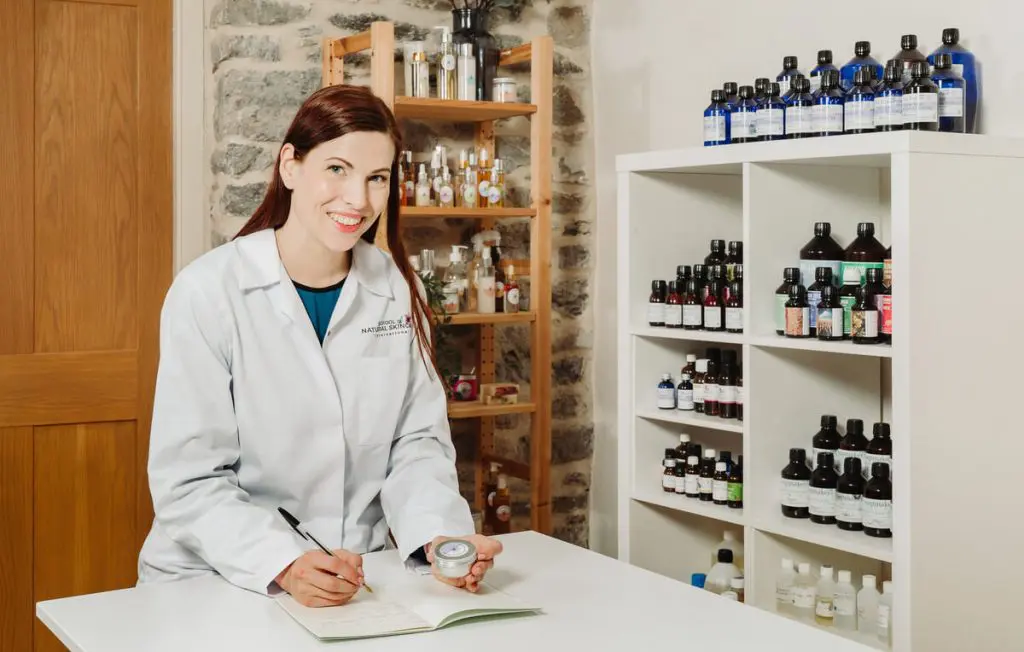
Get your questions answered
each week in our dedicated Tutor Q&A
Join the professionals
for LIVE course sessions
Expand your understanding
with our monthly Formulators Forum, a LIVE learning and discussion session on Zoom
Have your end-of-course assignments personally marked
by our cosmetic scientists
Plus
Receive an invitation to join our private student and graduate online community.
Connect with like-minded formulators around the world inside our friendly student community. It’s the perfect place to discuss, support and inspire each other.
Student testimonials
This course has helped me create high-end products with advanced ingredients.
- Heena Bhat,
- India
I was struggling with advanced ingredients, but the course helped me improve significantly. After completing the Diplomas in Natural Skincare and Haircare Formulation, the Advanced Certificate in High-Performance Serum Formulation was the perfect next step. The in-depth ingredient knowledge and sample formulations were invaluable. Now, I’m eager to explore more industry-grade formulations.
- Heena Bhat,
- India
My confidence was low, but this well-structured course changed that.
- Jyotsna Vilas Thakare,
- India
I struggled with formulating products, from choosing a base to selecting the right emulsifiers and preservatives until I found the School and enrolled. The course content was fantastic, and the well-designed notes made studying a pleasure. The assessments kept me motivated, and now I can formulate confidently with minimal trials.
- Jyotsna Vilas Thakare,
- India
I used to struggle with choosing ingredients, but the School changed that.
- Nurhayati Nasir,
- Singapore
Now I confidently create high-performance serums, knowing exactly which herbs and oils to use. I loved making the serums myself—I’m so proud to say, ‘I MADE THIS! The research papers on ingredients were incredibly valuable, and I’m already eyeing the surfactants course next!
- Nurhayati Nasir,
- Singapore
Now, I can confidently formulate a facial line to expand my company.
- Michele Oparowski,
- USA
The course deepened my knowledge of serums, with valuable video presentations and review materials. Before enrolling, I struggled to keep my products all-natural while achieving the right consistency and using high-performance ingredients safely. It’s perfect for both novice and experienced formulators, and I thoroughly enjoyed the experience.
- Michele Oparowski,
- USA
This course has been invaluable for developing products for my skincare line.
- Katrina Gibson,
- Australia
I used to struggle finding natural, high-performance serums, but now I can formulate them for different skin types and conditions with confidence. This course has greatly enhanced my knowledge and enabled me to formulate effective formulations. The content was easy to follow, with great example formulas and clear guidelines. It aligned perfectly and gave me exactly what I needed.
- Katrina Gibson,
- Australia
Look inside the online classroom
All our training is completed through our easy-to-use online classroom.
Study from anywhere in the world at your own pace.
Why study with the
School of Natural Skincare?
Be part of our accredited, globally acclaimed, award-winning online formulation school that’s seen over 25,000 students from 150 countries enjoy mastering the art, science, and creativity of making natural and organic skincare.
Learn from and be supported by professional cosmetic scientists.
Tried and tested formulations. Our formulas have passed Preservative Efficacy Testing.
Formulate your way – natural, organic, vegan, sustainable – and customized to your skin type, tone and concerns.
Multi-award winning and accredited school, established in 2010.
Study with us for our own enjoyment and learning or to create a beauty brand.
Study at a pace that fits your lifestyle.
97% of our students would recommend the course to others.
Realize your dreams of becoming an advanced formulator.
Featured in






Where are our graduates now?
For many of our students, their ultimate goal when studying with us is to start their own beauty brand.
Here are some of our graduates who have gone on to become beauty entrepreneurs across the world. If this is what you aspire to, we can’t wait to see your story here one day soon.
Lubna Melhem’s Journey: A Quest for Natural Skincare and Entrepreneurship
“A ritual rather than a routine”: Karen’s mission to take beauty back to basics, while keeping its transformative power
How To Turn Your Passion for Skincare Into a Career
A Natural Business Built on Lifelong Learning
A passion for creating high-performance serums free from harmful chemicals
How One Diploma in Natural Skincare Formulation Student Boosted her Skin Care Business to the Next Level!
The Advanced Certificate in High-Performance Serum Formulation in detail
By the end of the course, you will:
Formulate professional serums from scratch – even if you’re not a cosmetic scientist.
Create serums with a wide range of textures, including advanced oil-based serums, pressed serums, gel-based serums, emulsion-based serums, gel-cream serums and bi-phase serums.
Understand the needs of different skin types and how to customize your serum formulations to suit them.
Formulate serums that address multiple skin concerns, including hyperpigmentation, signs of aging, sensitive skin, oily skin, dull skin, loss of elasticity, damaged skin barrier, effects of oxidative stress, due to sun exposure, pollution and stress and more.
Master natural ingredient selection. Understand the functions, properties and benefits of a wide range of natural ingredients so you can easily and confidently select the right ones for your formulations.
Sell your products with confidence. Be empowered by your new knowledge and skills to comply with regulations and take your products to market.
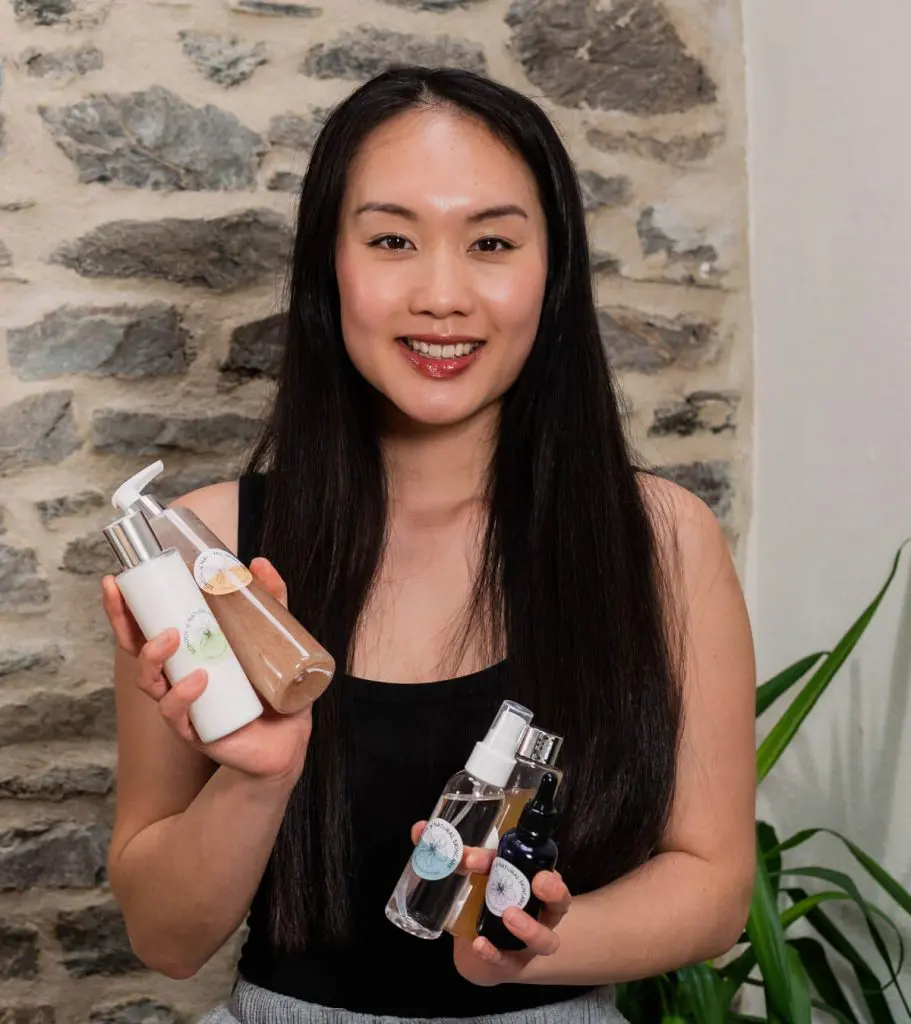
What you need to know:
Level
Advanced.
Schedule
Self-paced course with on demand lessons. Study at a time that suits you. Optional live sessions.
Study time
Approximately 70-100 hours. Most students complete the course within six to 12 months.
Course access
18 months. This can be extended for a small fee.
Prerequisites
Some prior knowledge of skincare formulation. You’ll also need access to the internet and a computer or tablet to access our online classroom.
When can I start?
Enrollment is open all year round, and you can begin the course as soon as you’re ready.
What you’ll study:
Module 0: Introduction for Formulating (Optional)
In this module, we will cover some of the essentials of formulating. As this is a more advanced course, we expect you’ll already have this foundational knowledge. We have included this module as a useful reminder, but feel free to skip it if you like.
Read more
This module covers:
- What is a formula?
- Using a product development brief.
- Equipment for your home lab.
- Professional lab equipment.
- Testing and adjusting pH.
- Good manufacturing practice (GMP).
Module 1: Introduction to Formulating High-Performance Serums
We start by delving into the different serums you’ll be creating on this course, their purpose, ingredients and characteristics. Plus, you’ll learn about formulating for different skin types and concerns.
Read more
In this module, you will learn:
- What makes a serum high-performance.
- The wide range of benefits serums can offer and how to achieve these outcomes.
- How to choose the right formula type to deliver the benefits you desire.
- Skin anatomy and physiology.
- The characteristics, causes and skincare solutions for mature, oily, dry, sensitive and normal skin.
- The role of antioxidants in anti-aging products.
- The causes of hyperpigmentation and helpful ingredients for reducing the appearance of hyperpigmentation.
- The characteristics, causes and helpful skincare ingredients for skincare concerns including acne, eczema, dermatitis, psoriasis, rosacea, stretch marks, cellulite and pseudofolliculitis barbae (PFB).
Module 2: Serum Ingredients
Increase your knowledge of cosmetic ingredients by learning about a wide variety of high-performance active ingredients, functional ingredients, lipids, humectants, chemical exfoliants and more. Explore their benefits and how to use them, and identify suitable ingredients for your formulations.
Read more
This module is a vast library of ingredient information featuring 200+ ingredients!
- Understand the chemistry of lipids and learn about a wide selection of carrier oils, esters, butters and waxes.
- Formulate with a wide range of hydrating, high-performance humectants including hyaluronic acid.
- Learn the benefits that AHAs and BHAs can offer and how to formulate with them safely and effectively.
- Discover 75 advanced active ingredients, including antioxidants, vitamins, peptides, botanical extracts, and ingredients for skin barrier strengthening, sun protection, toning, anti-inflammation, antimicrobial action, and skin brightening.
- Use, choose and blend essential oils with confidence referring to both our quick reference charts and detailed profiles to help you.
- Create safe and stable formulations by working with natural thickeners, emulsifiers, preservatives, solubilizers and pH adjusters.
- Organize and store ingredients properly in your home lab and follow your six-step process for finding substitute ingredients.
Module 3: Formulating Innovative Anhydrous Serums
This module takes your knowledge of anhydrous serums to a whole new level! Create a range of textures from smooth, elegant, non-greasy liquid oil serums to decadent pressed serums.
Read more
What you will learn:
- Formulate advanced anhydrous serums: Create high-performance oil-based and pressed serums, understanding their benefits and ingredients.
- Antioxidant Concentrate Serum: Formulate a Vitamin C-rich serum to combat aging and oxidative stress from sun exposure and pollution.
- Chamomile Soothing Serum: Develop a serum with anti-inflammatory botanicals to reduce skin redness and irritation.
- Barrier Support Serum: Craft a ceramide-infused serum to repair and protect the skin barrier, ideal for dry and sensitive skin.
- Repairing Lip Serum: Create a luxurious lip serum with Vitamin C, Coenzyme Q10, protective antioxidants and repairing phytosterols to restore and protect the lips.
- Golden Rose Pressed Serum: Formulate a semi-solid serum to restore the skin barrier using COSMOS-certified natural ingredients.
- How to formulate your own serums using our guidelines, templates and worksheets.
View all modules
Module 4: Formulating Gel-based Serums
Gel-based serums create hydrating, light textured, easily absorbed products perfect for under eye and facial use. Discover when gel-based serums are the best choice, how to create different gel textures and skin feels, and which ingredients can be included in your gel-based formulations to target different concerns.
Read more
What you will learn:
- Master the creation of various gel serums, exploring their benefits, suitable ingredients, packaging, and shelf-life extension techniques.
- Brightening Serum for Hyperpigmentation: Formulate a serum with ingredients specifically designed to reduce and prevent pigmentation.
- Moisture Boost Serum: Develop a serum enriched with hyaluronic acid and humectants to deeply hydrate and plump the skin, reducing fine lines and wrinkles.
- Vitamin C and E Gel Serum: Learn to create a serum that protects against oxidative stress with stabilized ascorbic acid for effective anti-aging benefits.
- Troubleshooting techniques.
- How to formulate your own serums using our guidelines, templates and worksheets.
Module 5: Formulating Emulsion-based and Gel-cream Serums
Have fun using different emulsifiers and other ingredients to create a range of textures from light gel-creams, to thin milky emulsions or rich, succulent emulsions. Create a wide range of professional emulsion-based serums, including eye serums, night serums, balancing serums for oily skin, and serums formulated to keep the skin looking firm and youthful.
Read more
What you will learn:
- Understand the unique properties of emulsion and gel-cream serums, their benefits, ingredients, packaging, and shelf-life extension techniques.
- Dive into the science and practical steps of making stable emulsions using natural emulsifiers.
- Balancing Gel-Cream Serum: Formulate a niacinamide-infused serum to balance sebum, reduce oiliness and acne, and strengthen the skin barrier.
- Toning Eye Serum: Develop a caffeine-based eye serum to moisturize, tone, and tighten the delicate skin around the eyes.
- Anti-Aging Night Serum: Learn to create a Vitamin A serum that prevents collagen breakdown, stimulates new collagen, and keeps skin firm and youthful.
- Troubleshooting techniques.
- How to formulate your own serums using our guidelines, templates and worksheets.
Module 6: Formulating Bi-phase Serums
Bi-phase serums are fun to formulate, create and use! They are separated into two distinct phases – water- and oil-based – and must be shaken before each use. If formulated to contain botanical ingredients that add lovely color, bi-phase serums look very attractive on a shelf.
Read more
What you will learn:
- Discover the key ingredient that will keep your phases separate, which ingredients to avoid using in bi-phase serums and how to color your phases using natural ingredients.
- Anti-Redness Serum: Formulate a bi-phase serum with gotu kola to soothe inflammation and reduce redness, featuring a striking oil phase color.
- Anti-Pollution Serum: Develop a serum with protective film-forming ingredients and antioxidants to combat pollution and oxidative stress.
- Exfoliating AHA Serum: Create a fruity-scented bi-phase serum with AHAs to exfoliate, boost cell turnover, and hydrate the skin.
- Troubleshooting techniques.
- How to formulate your own serums using our guidelines, templates and worksheets.
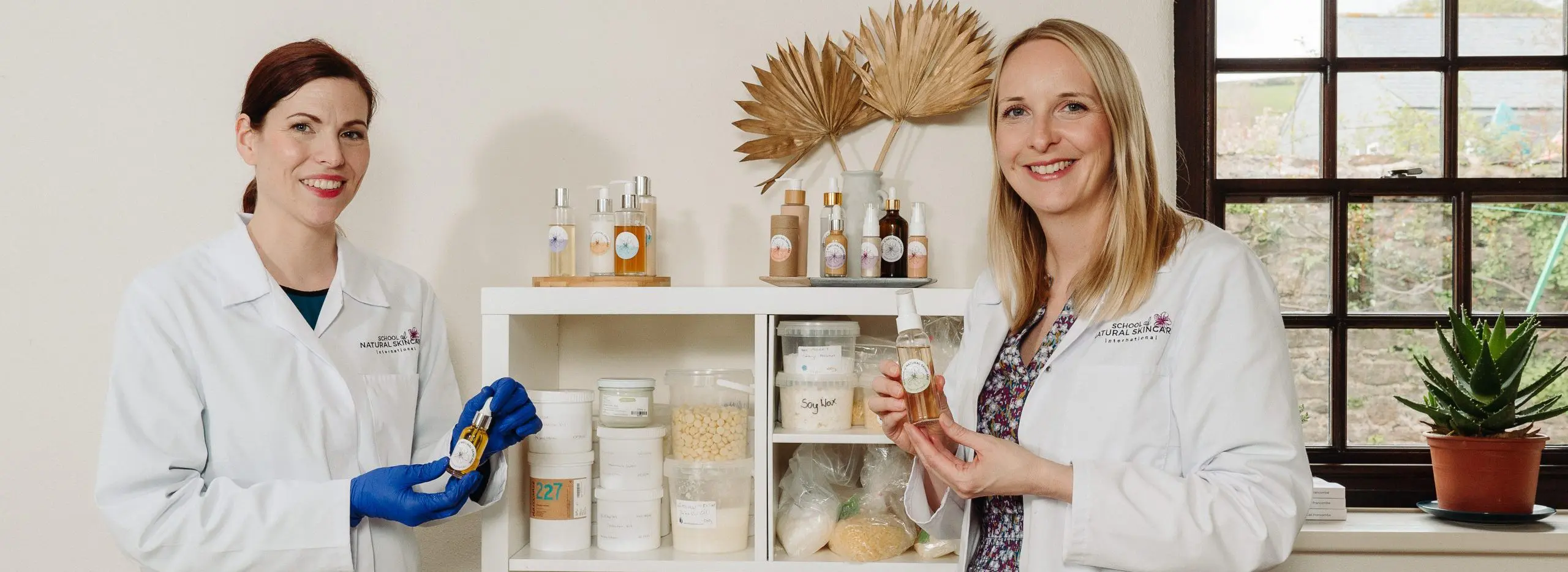
Ready to become an advanced formulator?
It's easy to get started
Here’s what you get:
- Online course: Value $1000
- Tutor support: Value $500
- Live learning sessions: Value $500
- Community membership: Value $500
Total value:
$2500+
All included
Enroll now for just:
It’s easy to get started
Choose your preferred payment option below and get immediate access to our online classroom.
Pay in full
Instant access to the
whole course for
US $597
Access the entire course immediately.
or
Installments
Two monthly
installments of
US $347
Spread your investment over two months. Receive half of the course materials in the first month and half in the second month.
We accept all major debit and credit cards and Paypal
By joining the course you accept our terms and conditions found here.
Bundle Offer
Join our Skincare Specialist Program
Save $200 and get four FREE classes
Perfect if you are new to formulating and want to start by creating a wide range of professional standard natural and organic skincare products for the face and body.
You can then advance your skills by developing your knowledge of high-performance active ingredients, including vitamins, antioxidants, AHAs and BHAs, peptides, ceramides and more, to create premium skincare products.
You’ll get access to our Diploma in Natural Skincare Formulation and Advanced Certificate in High-Performance Serum Formulation to continue your exciting adventure as you extend your skills to become a master skincare formulator and realize your dreams of launching your own beauty brand.
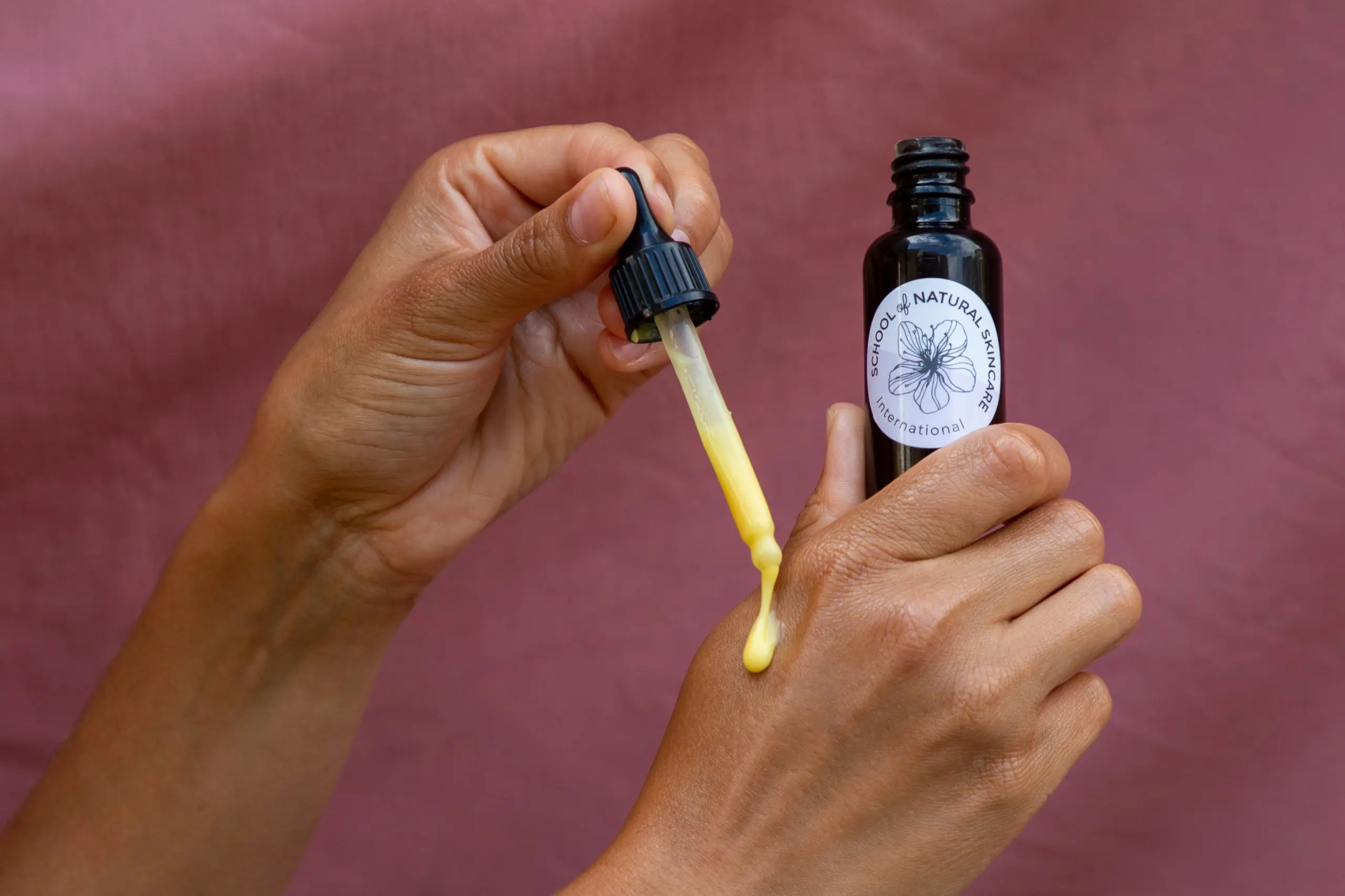
Plus
Get four bonus classes FREE
1
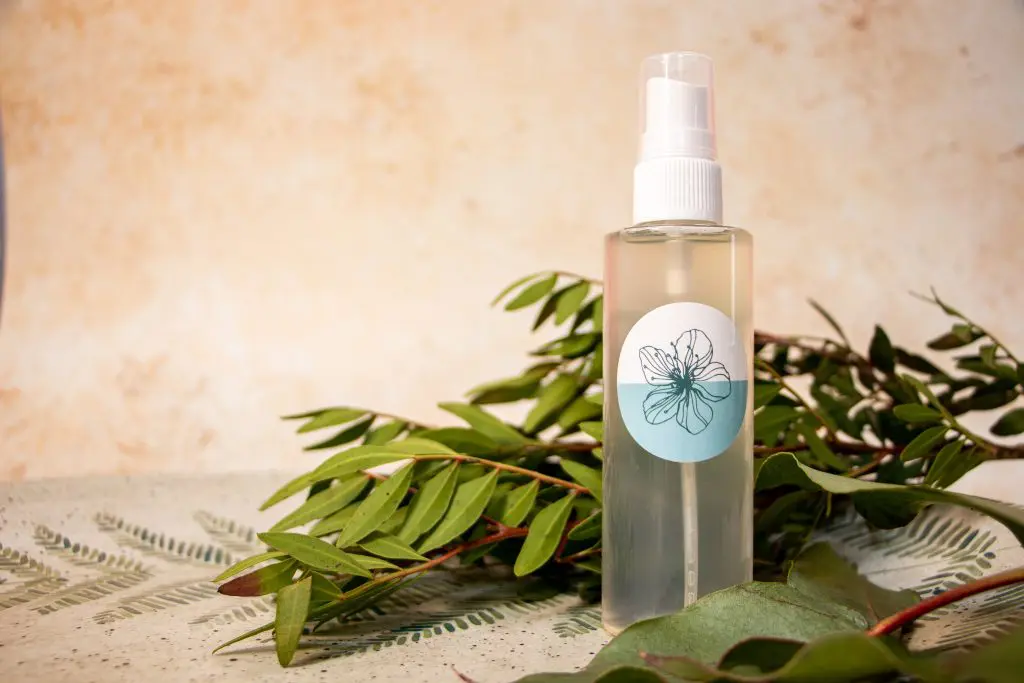
Formulating with AHAs and BHAs
2
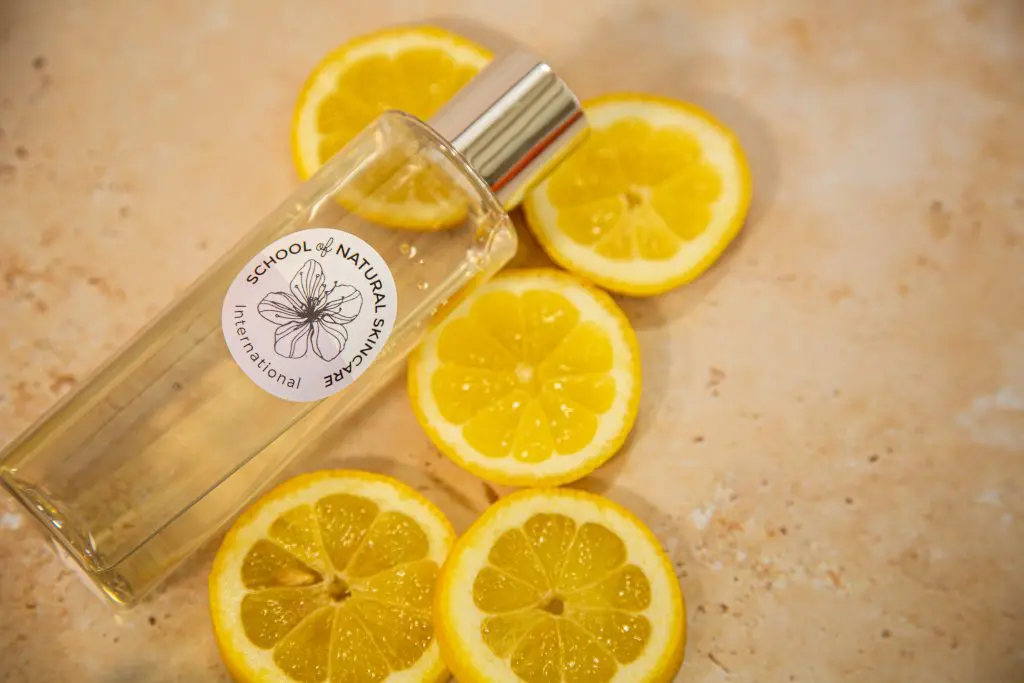
Formulating Face and Body Washes with Natural Surfactants
3
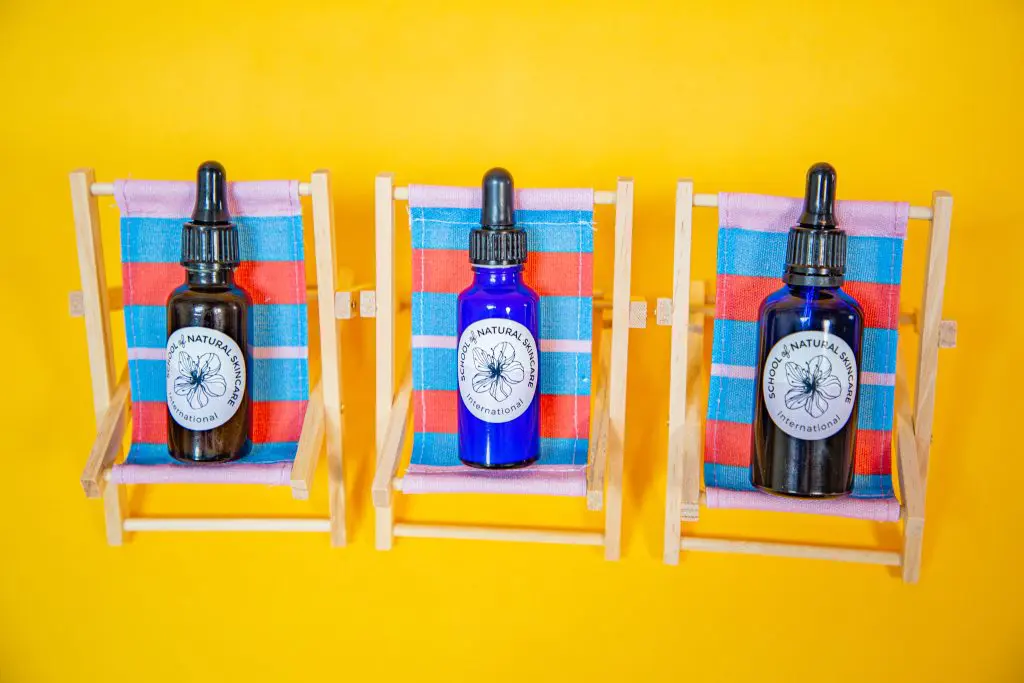
Formulating Body Serums
4
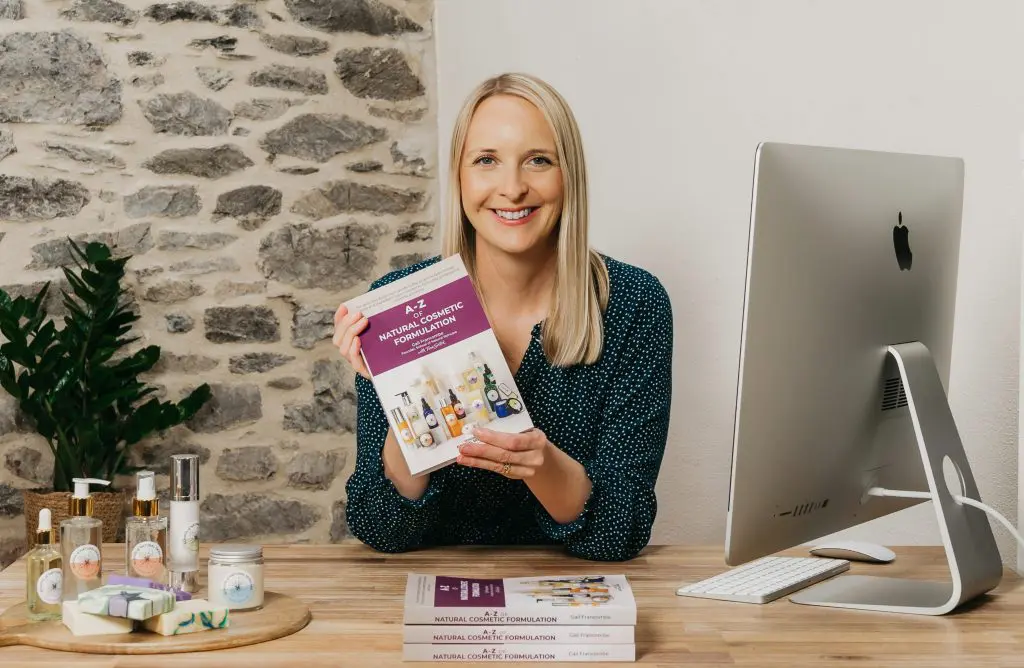
Digital Copy of the International Bestselling Book A-Z of Natural Cosmetic Formulation
1

Formulating with AHAs and BHAs
2

Formulating Face and Body Washes with Natural Surfactants
3

Formulating Body Serums
4

Digital Copy of the International Bestselling Book A-Z of Natural Cosmetic Formulation
Read the full details of the
BUY THE BUNDLE AND SAVE!
Enroll in the Skincare Specialist Program today
Here’s what you get:
- Two online courses: Value $2500
- Tutor support: Value $1000
- Live learning sessions: Value $1000
- Community membership: Value $500
- Bonus classes: Value $400 +
Total value:
$5400+
All included
Enroll now for just:
Pay in full
Instant access to the
whole program for
US $1657
Save $200 compared to enrolling on both courses separately. Plus, get four bonus classes for free.
or
Installments
Five monthly
installments of
US $397
Spread your investment over five months,. Each month, the next installment of your course materials will be released. Plus, get four bonus classes for free.
We accept all major debit and credit cards and Paypal
By joining the course you accept our terms and conditions
Hear what students are saying
Your courses have greatly boosted my confidence.
- Adveeka Gowdaa,
- India
Dreaming of making my own high-quality products, I enrolled onto your Advanced Certificate in High-Performance Serum Formulation. Wow! It introduced me to so many unfamiliar ingredients and guided me in creating formulations with them. The most useful aspect was the videos, which enhanced my connection to the course material and were particularly valuable for deepening my understanding of the content.
- Adveeka Gowdaa,
- India
The course provided the understanding I needed to confidently create high-quality products.
- Marian Eshun,
- USA
Before the course, I lacked the knowledge to create homemade creams and lotions for my all-natural skincare business. The overall approach was excellent and gave me the skills to formulate effective skincare products. I appreciated the step-by-step lesson plan, videos, and clear, simple language. Thank you for such a great course.
- Marian Eshun,
- USA
This course was exactly what I needed to enhance my skills and understanding.
- Stacy Sanders,
- USA
I wanted to improve my confidence in formulating skincare products, especially with components like preservatives and water. The course provided in-depth knowledge and a solid foundation, increasing my confidence. I appreciated the self-paced format, which allowed me to learn at my own speed.
- Stacy Sanders,
- USA
It’s exciting to experiment with so many different ingredients.
- Bronwen Morgan,
- UK
I enrolled with the School to expand my knowledge from basic skincare to specialized products like serums. Now, I have a much wider knowledge of ingredients and how to use them in serum formulations. I enjoyed the demonstrations and written formulations, which gave me a great starting point. I’ve learned so much—thank you!
- Bronwen Morgan,
- UK
The course taught me exactly how to work with different active ingredients.
- Enkhzul Usukhbayar,
- Ireland
I’m so glad I enrolled in the School of Natural Skincare because now I can create high-performance serums. The valuable knowledge and hands-on video demonstrations have been a huge help as I work towards launching my own brand. I’m excited to develop a serum line for my future business!
- Enkhzul Usukhbayar,
- Ireland
Top FAQs
This is our most advanced course so it is not suitable for complete beginners.
If you have some experience of making skincare products already, for example you have made facial oils, balms, creams and lotions, and you are ready to study and formulate more seriously, then the course will be suitable for you.
If you are an experienced formulator but have yet to formulate with a wide range of actives, or you want more knowledge of how to do so, then the course is also perfect for you.
If you are a complete beginner then we recommend that you take either our Certificate in Making Natural Skincare Products or our Diploma in Natural Skincare Formulation first.
Our Skincare Specialist Program contains our Diploma in Natural Skincare Formulation and our Advanced Certificate in High-Performance Serum Formulation at a reduced fee. This is perfect if you’d like to take this course but you don’t have any prior experience.
In our courses in general we always focus primarily on natural ingredients and use close to 100% naturally derived or COSMOS-approved ingredients. In the Advanced Certificate in High-Performance Serum Formulation, the vast majority (around 90%) of ingredients we use are naturally derived and permitted by major natural and organic standards such as COSMOS. We include a wide range of natural emulsifiers, solubilizers, gums, thickeners, carrier oils, esters, fragrances, botanical extracts, humectants, antioxidants and other active ingredients.
In the Advanced Certificate in High-Performance Serum Formulation, a small number (around 10%) of the ingredients we include are synthetic. We have only chosen synthetic ingredients with close ties to nature, for example, they exist in nature but are made synthetically or are ‘nature-identical’. Two examples are niacinamide (Vitamin B3), which is often used in natural cosmetics as it does exist in nature but the ingredient is made synthetically, and peptides, which are not permitted in natural/organic certifications because they are made synthetically, even though they only contain naturally occurring building blocks (amino acids).
We have included these ingredients as we wanted to include a wide range of the most popular and effective active ingredients. Our chosen ingredients have a specific benefit/activity that is very important in high-performance serums but can’t be found in any natural form/source. Any ingredients that are synthetic are clearly marked as such in our course materials, giving you full knowledge and complete control over what you use in your formulations.
We like to put the power and the choice in your hands! So, you can absolutely take the course and create formulations that are 100% natural or organic or suitable for COSMOS certification if you wish.
Yes! The Advanced Certificate in High-Performance Serum Formulation is accredited by the CPD (Continuing Professional Development) Certification Service. You can read more about our accreditations here.
Yes! The course is hosted inside an easy-to-use online classroom. It is designed to be taken at home from anywhere in the world. The products we make meet global quality and safety standards. We’ll provide information on ingredient suppliers in many different countries and will guide you to the relevant cosmetic regulations in many countries around the world, too. We have students in over 150 countries so you’ll be joining a thriving global community.
We are an international school with students worldwide. US dollars are the most widely recognized and accepted currency. You can check the exchange rate for your local currency using exchange rate sites such as xe.com. Either your bank or PayPal will exchange the enrollment fee for your local currency when you join.
At the end of the course, there are several assignments for you to complete and submit to us to be marked personally by our cosmetic chemists. They will provide personalized feedback and guidance if any corrections are needed. Your end-of-course completion certificate will be issued upon successful completion, and you will be the proud holder of our Advanced Certificate in High-Performance Serum Formulation!
You have access to the course within the online classroom for 18 months, so have plenty of time to study. You can download the course textbooks for lifetime access. You can renew your course enrollment for a small fee, which will also give you additional time to complete your assignments, further access to the Tutor Q&A and any updates to the course made during this time.
The course is a self-study, self-paced course, so you can study at a time that suits you and complete the course as quickly or slowly as you wish. The lessons are available for you at any time.
To enhance your learning, we provide tutor-led live learning sessions throughout the year, which are optional to attend. You’ll receive plenty of advance notice about when these are happening, and if you can’t attend live, you can enjoy the recording at a convenient time.
It’s important that you feel supported during your studies with us, and several avenues of assistance are available to you.
Technical/administrative help
Our customer service team is on hand if you require help with technical or administrative matters.
Tutor support and feedback on assignments
To provide you with the best support, we have experienced, professional cosmetic scientists on hand to answer your questions each week in the Tutor Q&A. We also run live tutor-led learning sessions throughout the year where you can deep dive into specific topics from the course.
At the end of your course, you will submit assignments to us that will be marked by one of our professional formulators. You will receive helpful feedback on your assignments, including any corrections that need to be made, so you can feel confident in the quality of your formulations.
Peer support
When you enroll on a course with us, you receive an invitation to join our Student and Graduate Community (hosted on Facebook), where you can meet and spend time with your student peers. We have students and graduates in the group from all over the world! You can ask questions, discuss formulations and feel part of a community as you progress through your studies.
Promotion of your beauty brand
If you already have a beauty brand or you establish a new brand after your studies, we can help you by promoting your brand to our vast, international audience! You’ll be invited to take part in an interview and have a feature written about you and your brand, which we will share with hundreds of thousands of our followers, by email and across social media. This is the perfect opportunity to start marketing your business and gain your own following.
It typically takes students 70-100 hours to complete the Advanced Certificate in High-Performance Serum Formulation. The amount of time it will take you will depend on how much practical formulating you choose to do, so you may wish to spend more or less time than this. Most students complete the course within six to 12 months. As it is a self-paced course, you can complete it at a speed that suits your schedule.
A variety of formats are used including comprehensive and beautifully designed course textbooks (provided as PDFs), workbooks and worksheets, video lessons, video demonstrations, quizzes and activities.
To get started you can use some basic kitchen equipment that you use solely for the purpose of cosmetic making. Here is a list of the equipment that you should consider using:
- Protective clothing.
- A water bath or hot plate for a source of heat.
- Heat-proof glass lab beakers.
- Two thermometers.
- A stick blender (immersion blender).
- Digital scales.
- Pipettes/spoons/spatulas.
- pH strips (or meter).
- Sufficient packaging.
We have a blog article and video that you may find useful on the equipment you need to get started: The equipment that you need for making natural skincare products at home.
We go into much more detail about the equipment you need in the Advanced Certificate in High-Performance Serum Formulation.
If you want a more professional lab setup, you can purchase professional pieces of equipment, which we can advise you about when you join the course. This is not necessary, however, as in many cases kitchen equipment is more than adequate.
As part of the course you receive a comprehensive global supplier list featuring hundreds of cosmetic suppliers all around the world.
We also have a smaller supplier list on our website you might want to look at in the meantime: Recommended cosmetic raw material suppliers.
We have featured a wide range of ingredients in the course including many that are common and easy to obtain. As this is an advanced course, some ingredients are more specialized and depending on where you are based you may need to order them from overseas suppliers that ship internationally.
We give plenty of guidance but there isn’t a set supply list, which means you can choose which ingredients you wish to buy.
What will I learn in the serum-making course?
You’ll learn to formulate serums for the face, lips and eyes with advanced active ingredients. You’ll create serums in a range of textures including oil-based, pressed, gel-based, emulsion-based and bi-phase serums.
Is the serum-making course suitable for beginners?
This is an advanced course, so prior knowledge of formulation is required.
Do I get a certification after completing the serum-making course?
Yes, upon successful completion of the end-of-course assignments, you will receive a serum formulation certification.
What is lip serum formulation?
Lip serum formulation is a process of creating lip serums using natural and organic ingredients, which you will learn in our course.
What is formulation certification?
Formulation certification is a recognition you receive after successfully completing a course in product formulation, like our serum-making course.
What is retinol serum formulation?
Retinol serum formulation is a process of creating serums with retinol, a potent skincare ingredient. Retinol is a type of Vitamin A and you’ll learn about many different types of Vitamin A on our serum course.
What is a serum course?
A serum course is a program where you learn to formulate different serums, like face and lip serums targeted to offer a variety of skin benefits.
Explore our articles
Want to try before you buy?
Sample a selection of our course material inside our online classroom.

